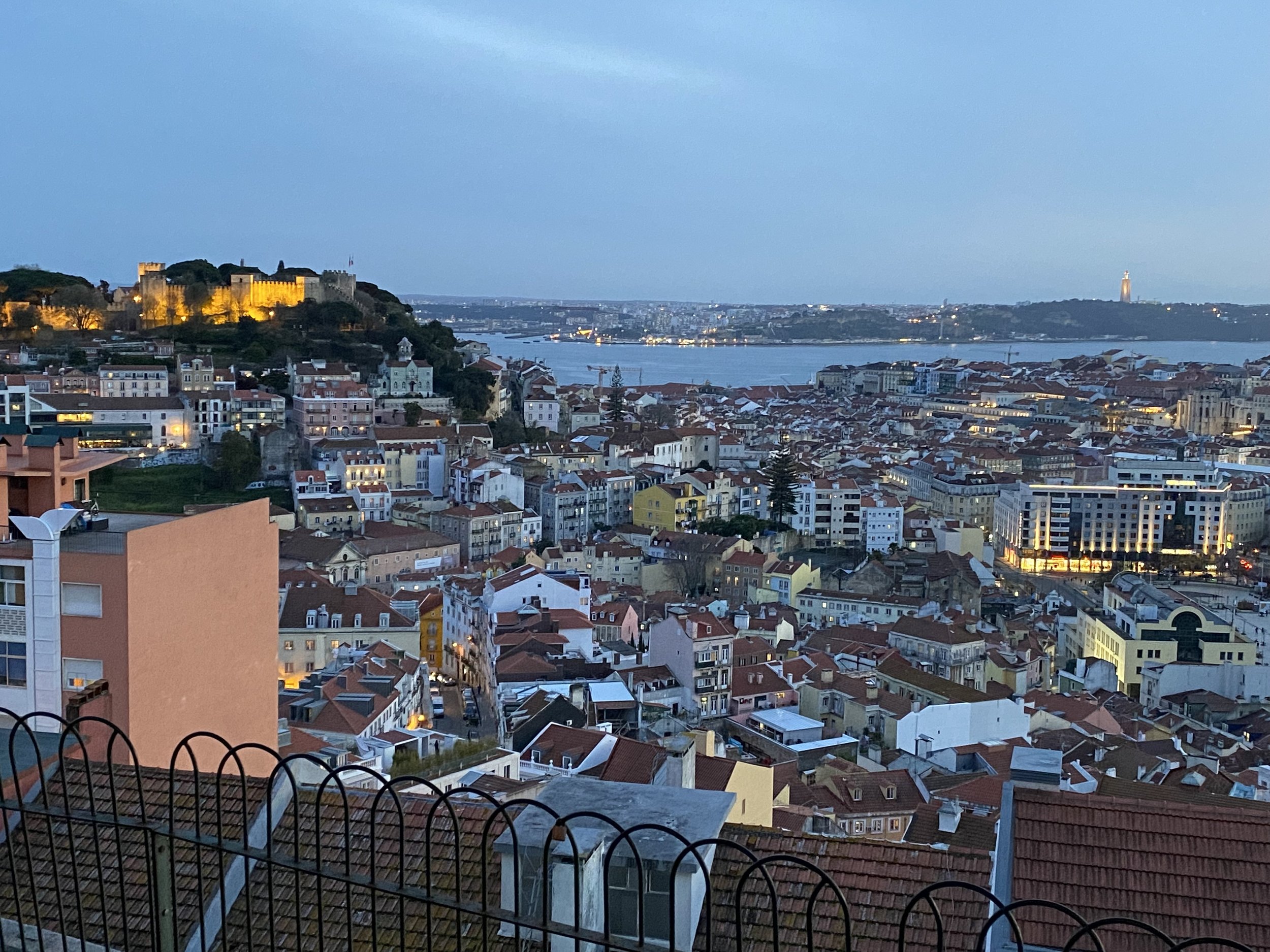The Best of Lisbon
Historic trams that squeeze their way down tiny one-way streets; laundry blowing in the wind from the balcony of a small, winding alley in Alfama; unique tile mosaics you’ll walk over in the historic centre turning the sidewalk into a work of art; the mournful sound of fado music drifting into the street from a bar in the Barrio Alto; the ocean waves crashing into the rocks on jagged coastlines and beaches just a 30 minute train ride from downtown. These are just some of the sights and sounds that make Lisbon appear frequently on lists of the world’s greatest cities. (This tour is based on four pretty jam-packed days, but if you don’t have that much time or are a more relaxed traveller than me, click below to see my top highlights).
Map
Day 1 - Baixa/Chiado
EAT: Manteigaria (Pastel de nata/egg custard tarts): If you’re like me, you’ll want to start your day with a couple of these beauties to make you really feel like you’re in Portugal. You’ll find these everywhere but this place is one of the best. There are a few locations but if you’re in the most tourist-frequented area (Baixa/Chiado), step into the one on Rua Augusta (the main pedestrian mall).
DO: Walking tours are my favourite first-day activity in an unfamiliar city. They not only give a great overview of the city but also give you direct access to a local expert who can fill you in on sights and restaurants worth visiting and as importantly, not worth visiting (you tend to get some of the most useful information walking with the guide in between official tour stops).. The one I went on was Sandeman which starts at the Praça Luís de Camões, a square in the Chiado (register online in advance, give a tip at end to the guide).
On the tour you’ll see a few highlights of the area including the Barrio Alto, Carmo Convent, and the view from the top of the Santa Justa elevator. Instead of standing in line down below, you can just walk up to the top platform - you’ll save both time and money. You’ll continue to the Dom Petro Plaza and down Rua Augusta through the arch and to the Praca do Comercio (Commerce Square).
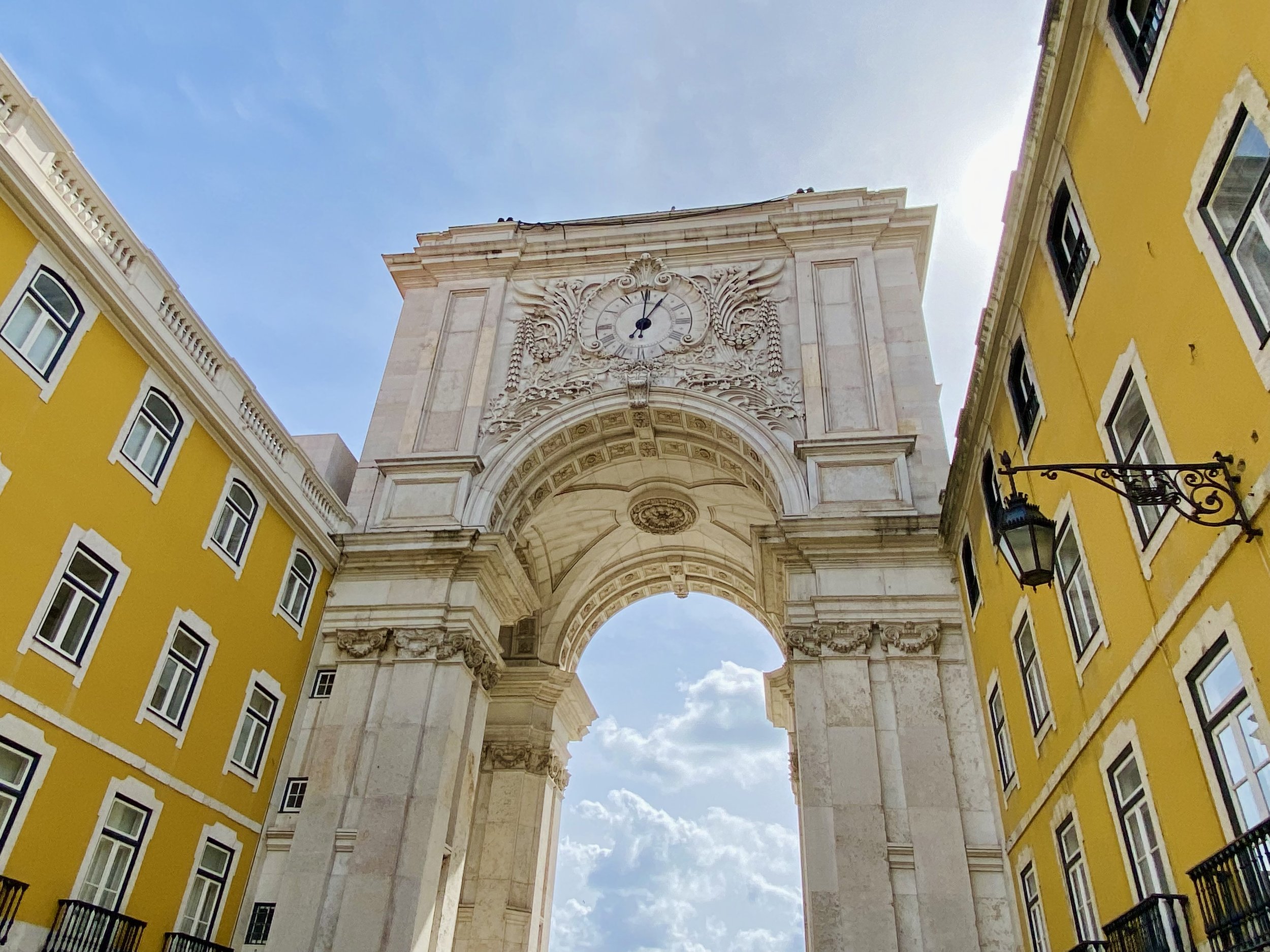

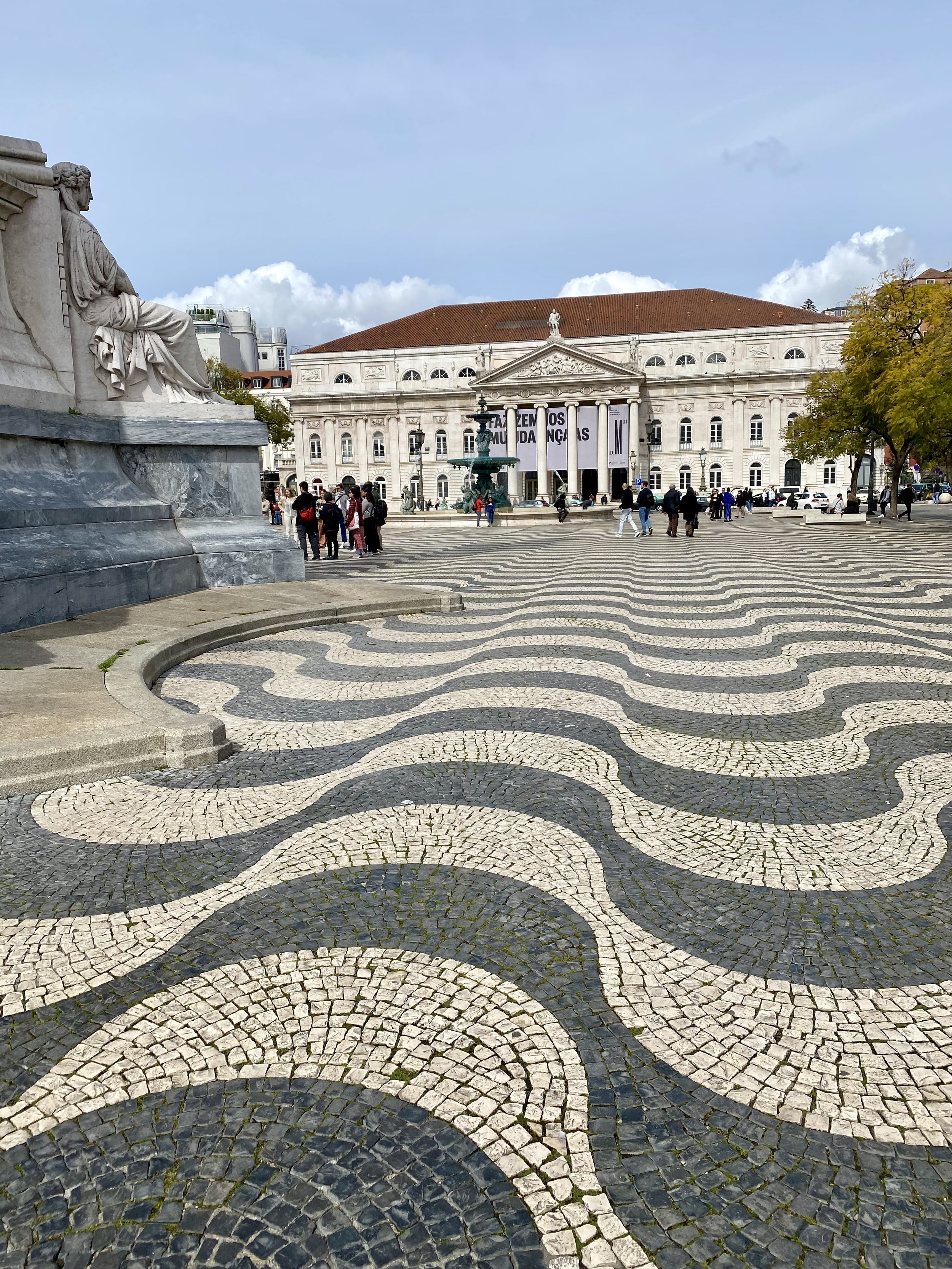
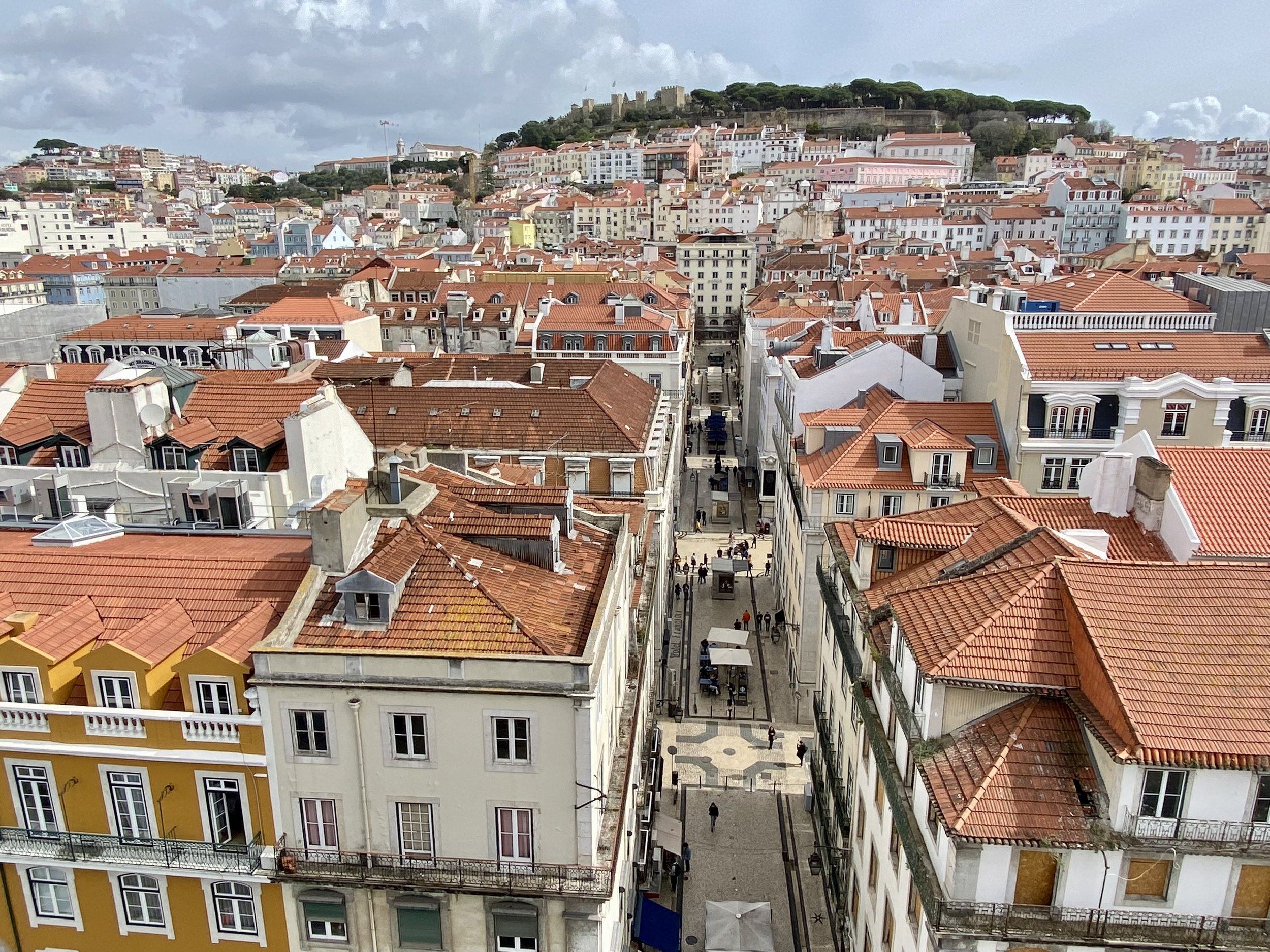
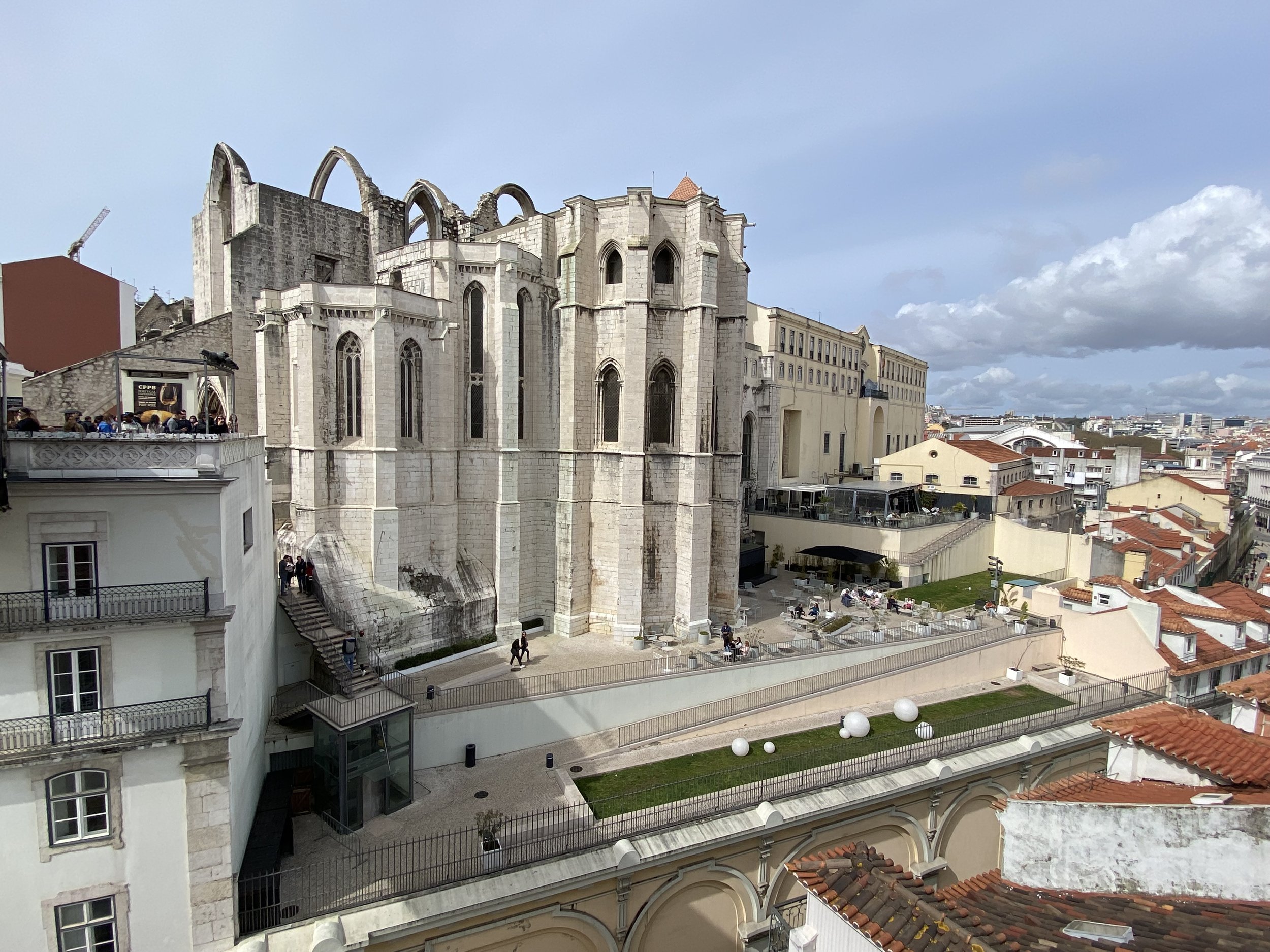
DO: Tram 28 - Avoid the throngs of tourists lining up to get on the famous tram at the beginning of the line and hop on a train heading west midway through the route on Rua da Conceicao. The famous Tram 28 winds its way past some of Lisbon’s most famous sights and through narrow one-lane streets. Get off at Rua Poiais Sao Bento for the spot below (Note: you can buy a Lisbon metro card - a viva viagem - at a metro station, and use it on the tram to save a bit of €.)
EAT: Restaurante Churrasqueira da Paz (authentic local restaurant): slightly further away from the main tourist area, this is an authentic no-frills spot to get some fresh, local grilled fish.
EAT: Nannarella (Gelato): a short, scenic walk from the churrasqueira (you’ll also see the Parliament on the way), you can get some great gelato and enjoy in the little park (Jardim Fialho de Almeida) down the street. There’s also a branch of the Copenhagen Coffee Shop if you need a little pick me up to fight off that jet lag.
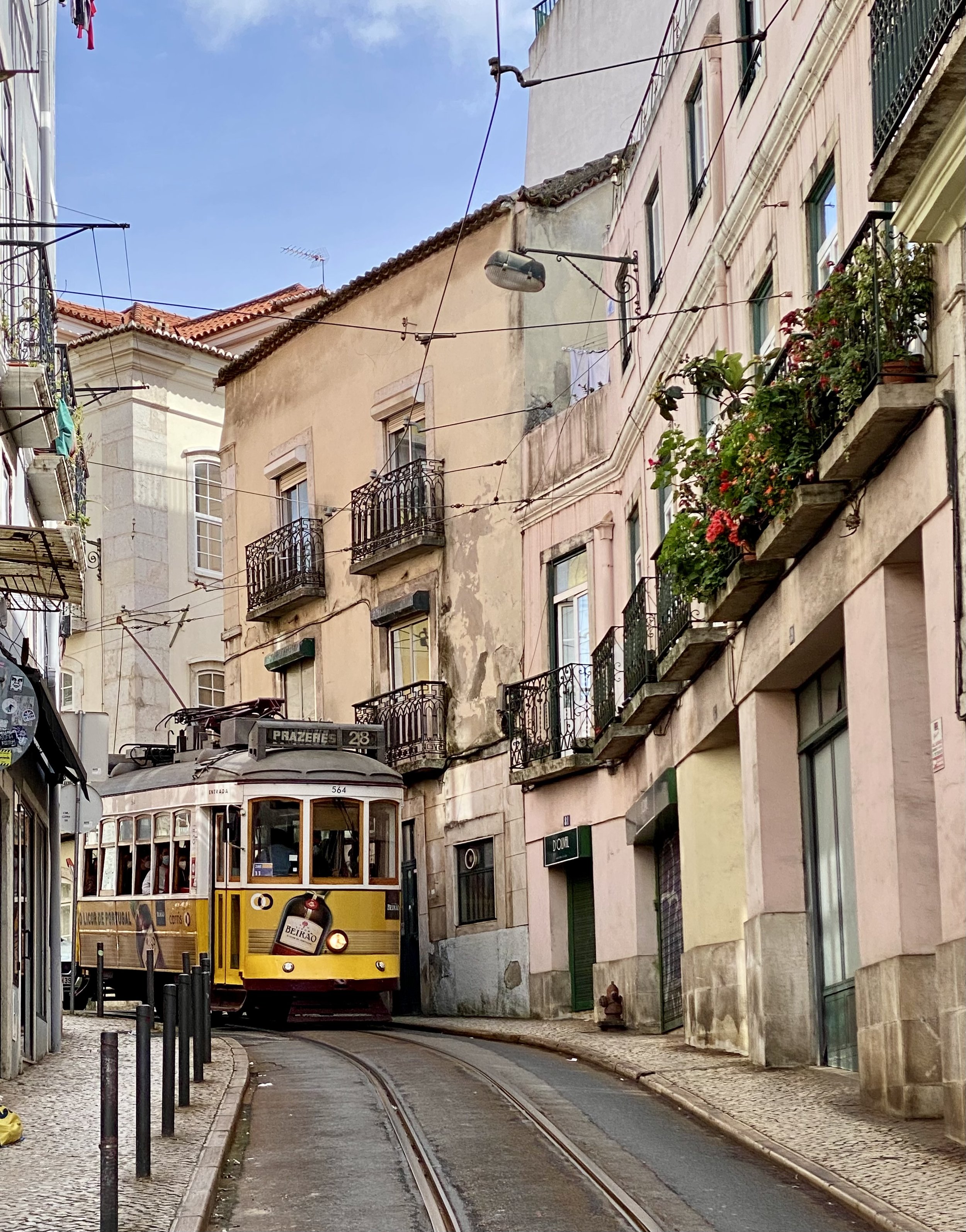
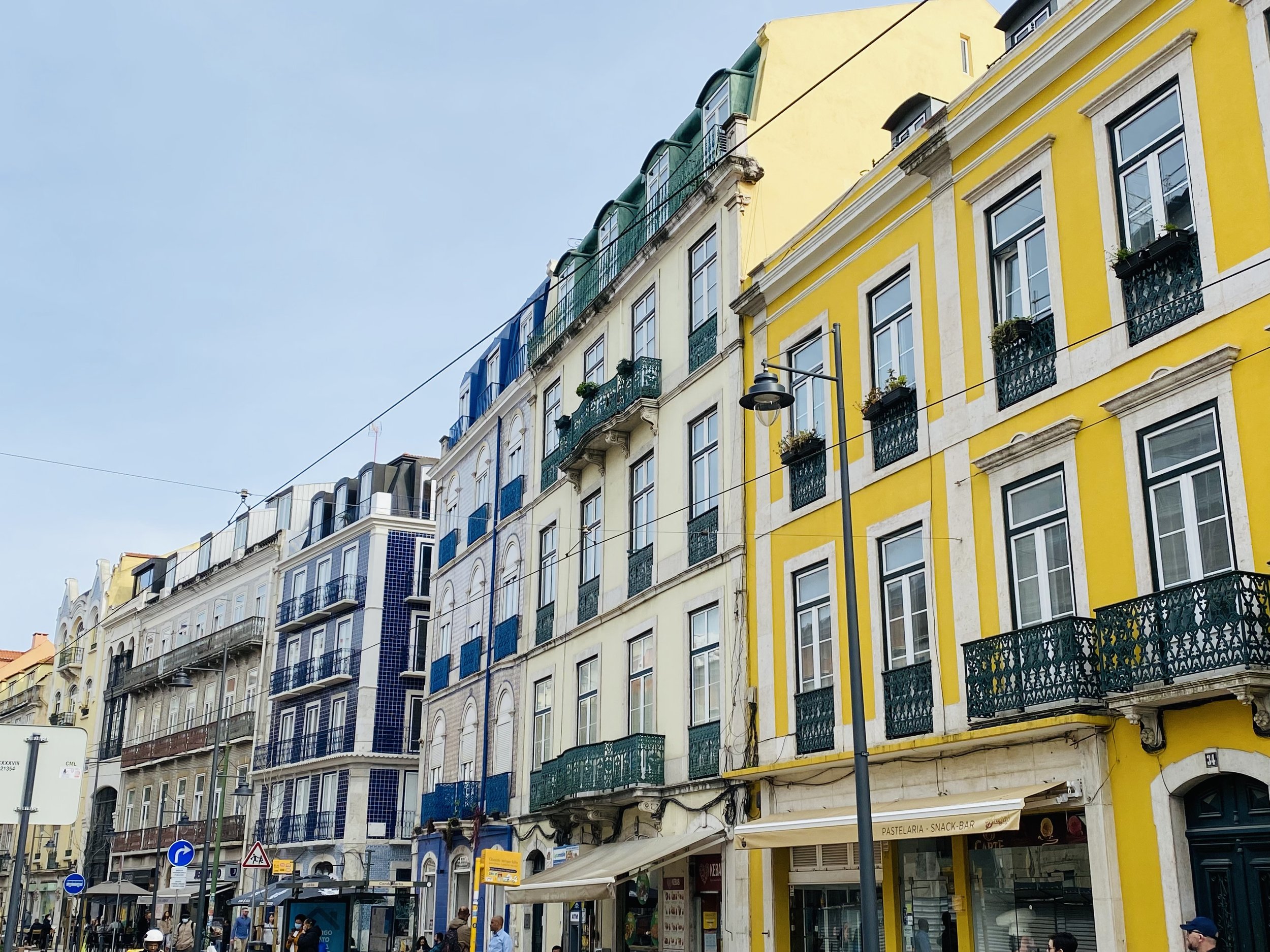
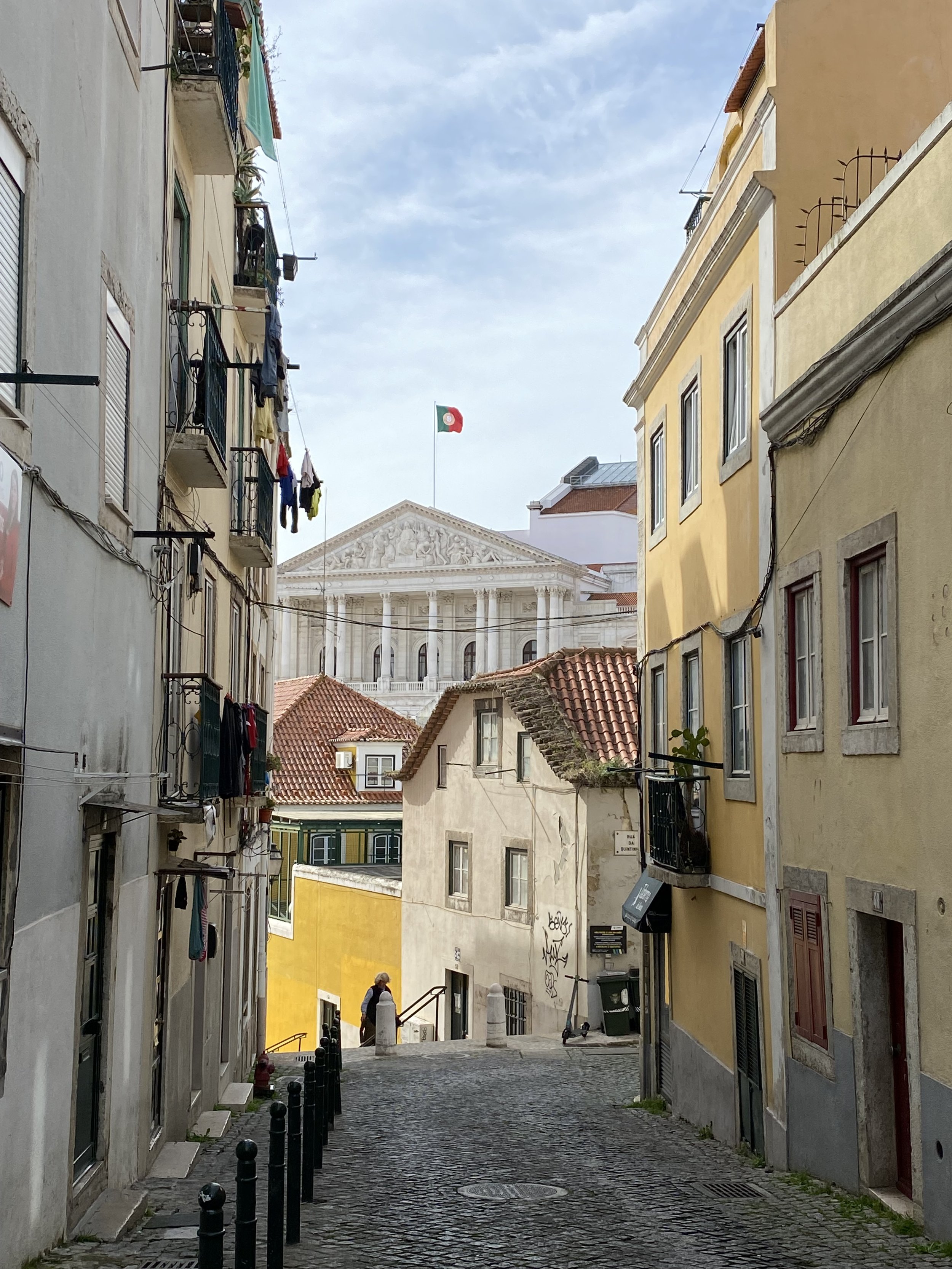
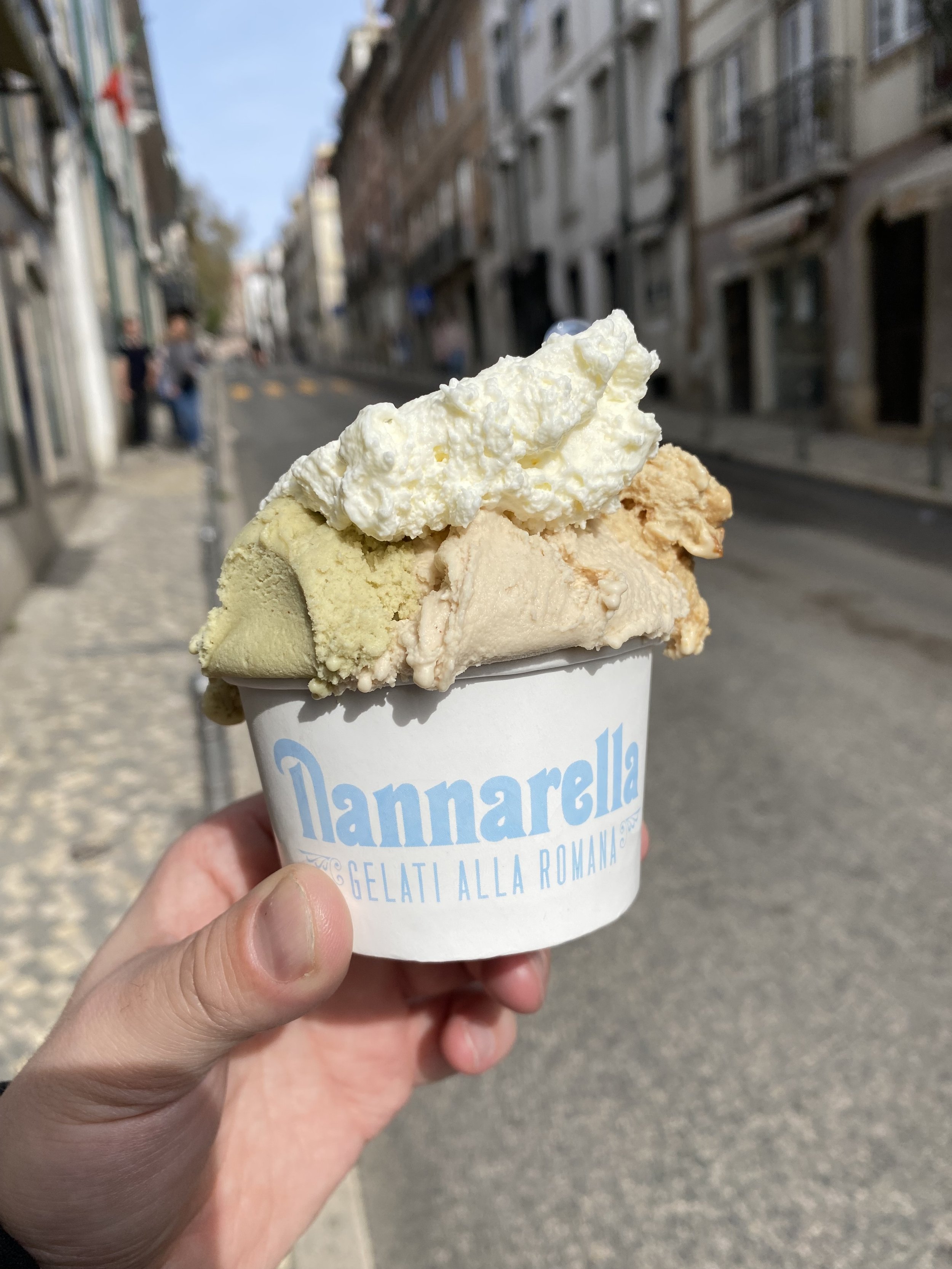
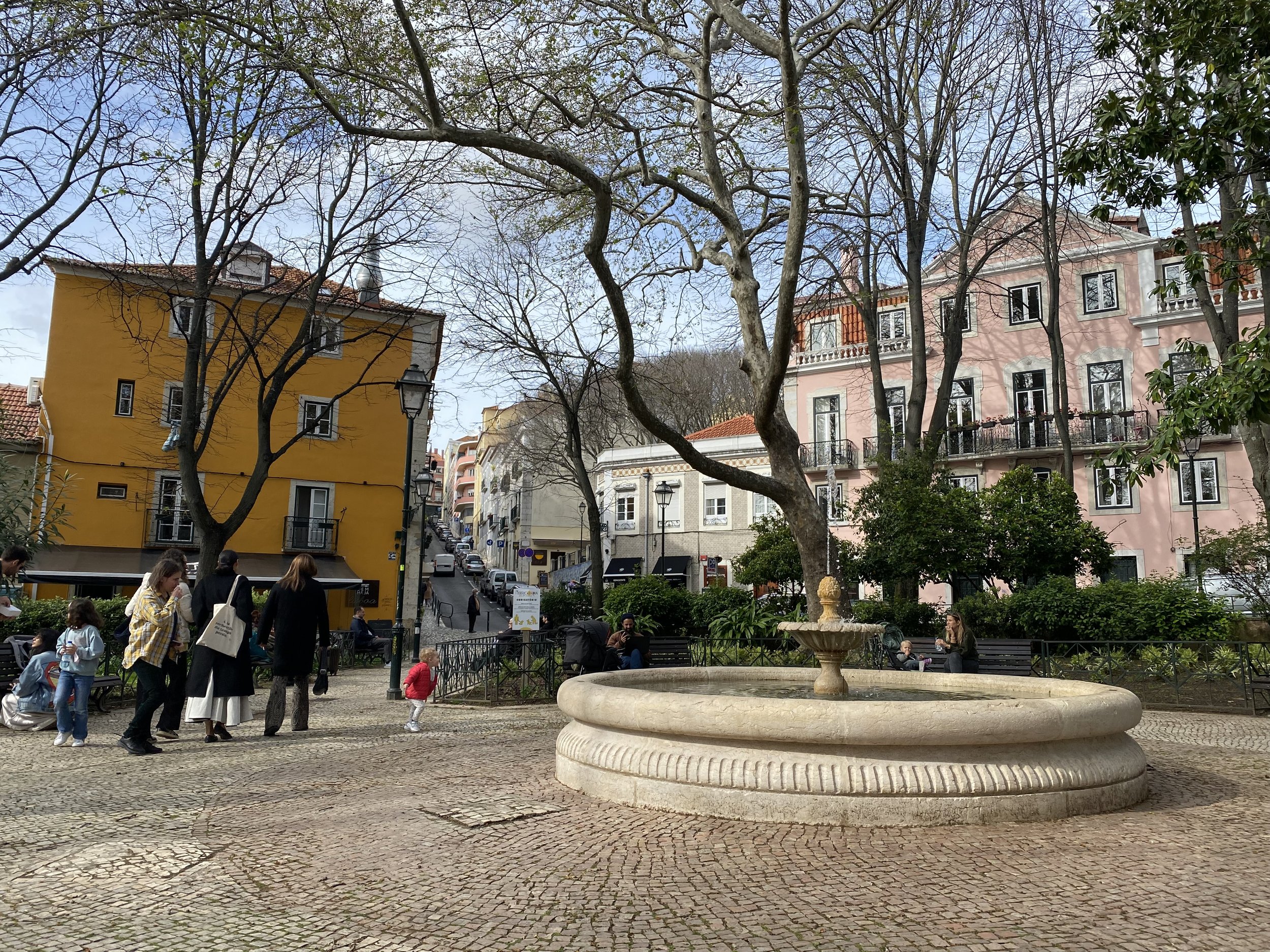
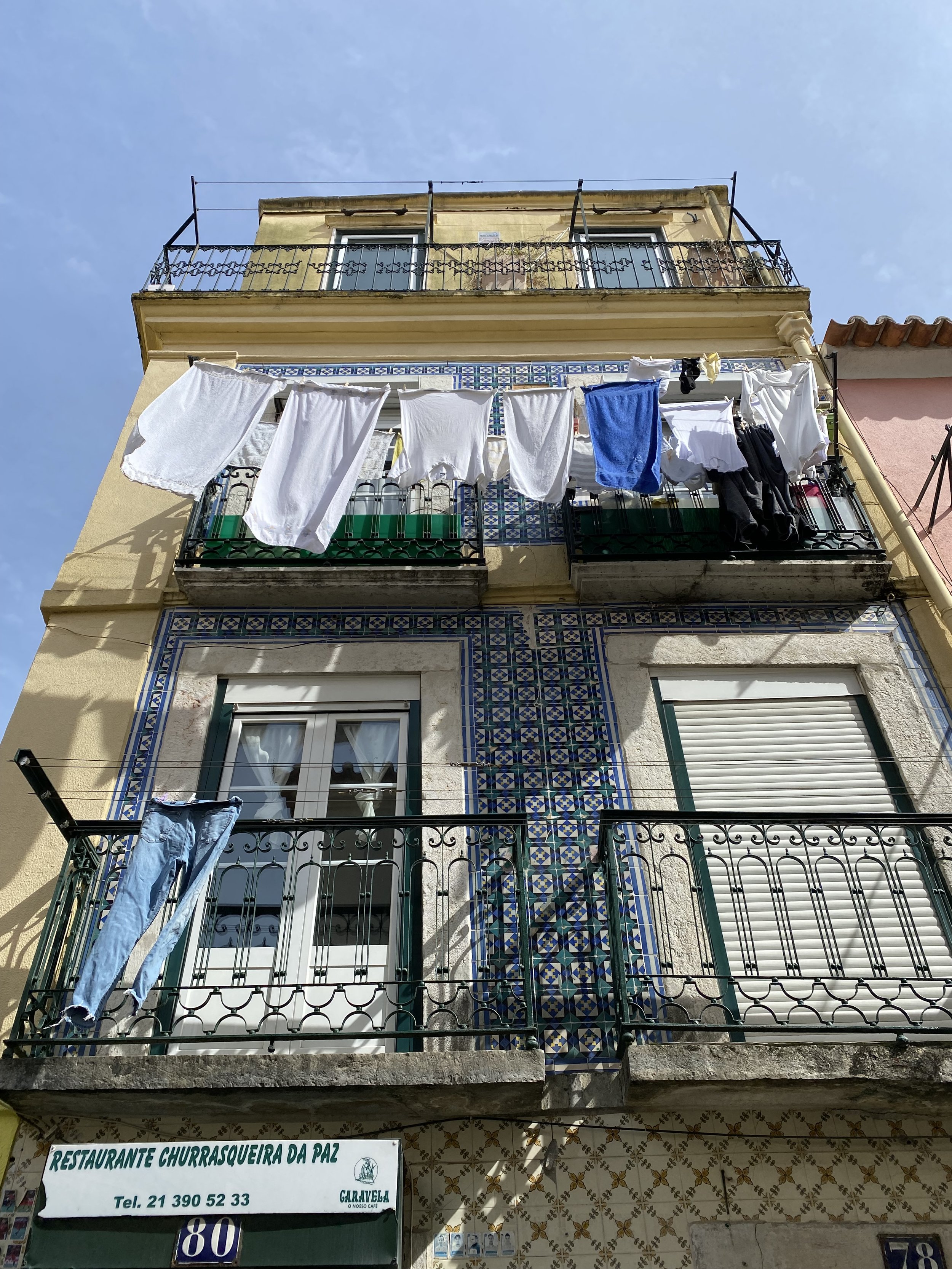

DO: To catch the sunset, you want to make your way up to one the highest points in the city: The Miradouro da Senhora do Monte. It’s a steep climb up here but you’ll pass some gems on the way including the Cathedral (Se), a few other scenic lookouts or ‘Miradouros’ (Miradouro de Santa Luzia and Miradouro das Portas do Sol - nice spots you should also check out, but facing the wrong way for sunset). Watching the sunset and the lights of the city turn on all around you was one of my top Lisbon experiences.
EAT: Time Out Market (local chefs, Portuguese + global food): You may have read their guides to cities such as NYC and San Francisco, but they’ve perfected their art here in Lisbon. TimeOut Market is a food hall like no other with tons of options from some of Portugal’s best-known chefs, situated next door to the more traditional market Mercado da Ribeira.
There’s food from all over the world here but you really want to focus on local Portuguese cuisine - luckily, there are many options. I tasted the modern take on bacalhau (cod) at Cozinha da Felicidade and the bitoque (traditional steak) at Café de São Bento (on separate occasions). You can also try a prego (traditional steak sandwich) or pasteis de bacalhau (codfish cakes) here - a few other Portuguese favourties. Speaking of pasteis de bacalhau, you’ll want to avoid the ones with cheese they sell on rua Augusta - those aren’t authentic according to the locals.
If you want to continue on to get a drink, head over to Barrio Alto a neighbourhood known for its nightlife.
Day 2 - Belem
DO: If you’re a runner, a great way to get to Belem is to start your day with an approximately 10km or 6 mile jog from Praca de Comercia (Fortunately, this is one of the only flat places in the city and you’ll run along the Tagus River the entire time).
Otherwise, just take the tram that goes right to Belem from the Praca de Comercio. Along the way by foot or by tram, you’ll see the Ponte 25 de Abril (Golden Gate Bridge replica), and eventually enter the Belem district. You’ll also pass closely by the LXFactory. I didn’t have time to make it there but it’s a new creative hub with shops, restaurants and bars in an old industrial area.
Once you hit the Padrão dos Descobrimentos (Monument of the Discoveries) statue, going through the underpass you’ll get to the Jerónimos Monastery. Back along the river, about 1km further west, you’ll see another UNESCO World Heritage Site, the Belem Tower (these are the famous sites of Belem).
If you want to visit the Monastery or Tower, don’t make my mistake - avoid Monday when both are closed. If you’re choosing to visit one, I’ve heard you’ll want to go to the monastery rather than the tower.
EAT: Right by the monastery, you’ll find the real gem of this district: Pasteis de Belem (pasteis de nata, those custard egg tarts you’ve likely tried by this point, were actually invented by the monks in the monestary in the 1800s). There will most likely be a line but this is for takeout. If you want to eat inside (there’s a huge room at the back), just walk right in.
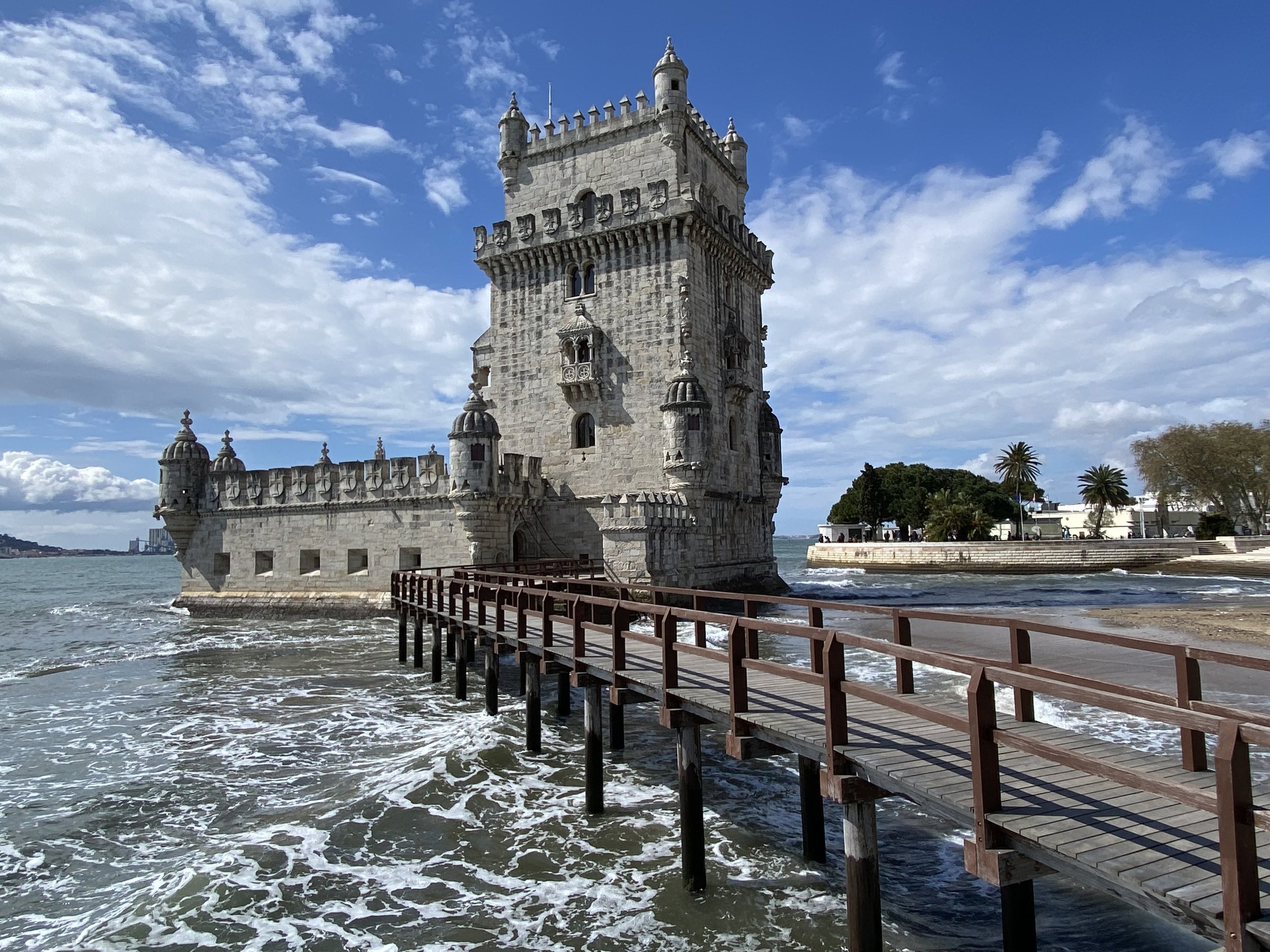


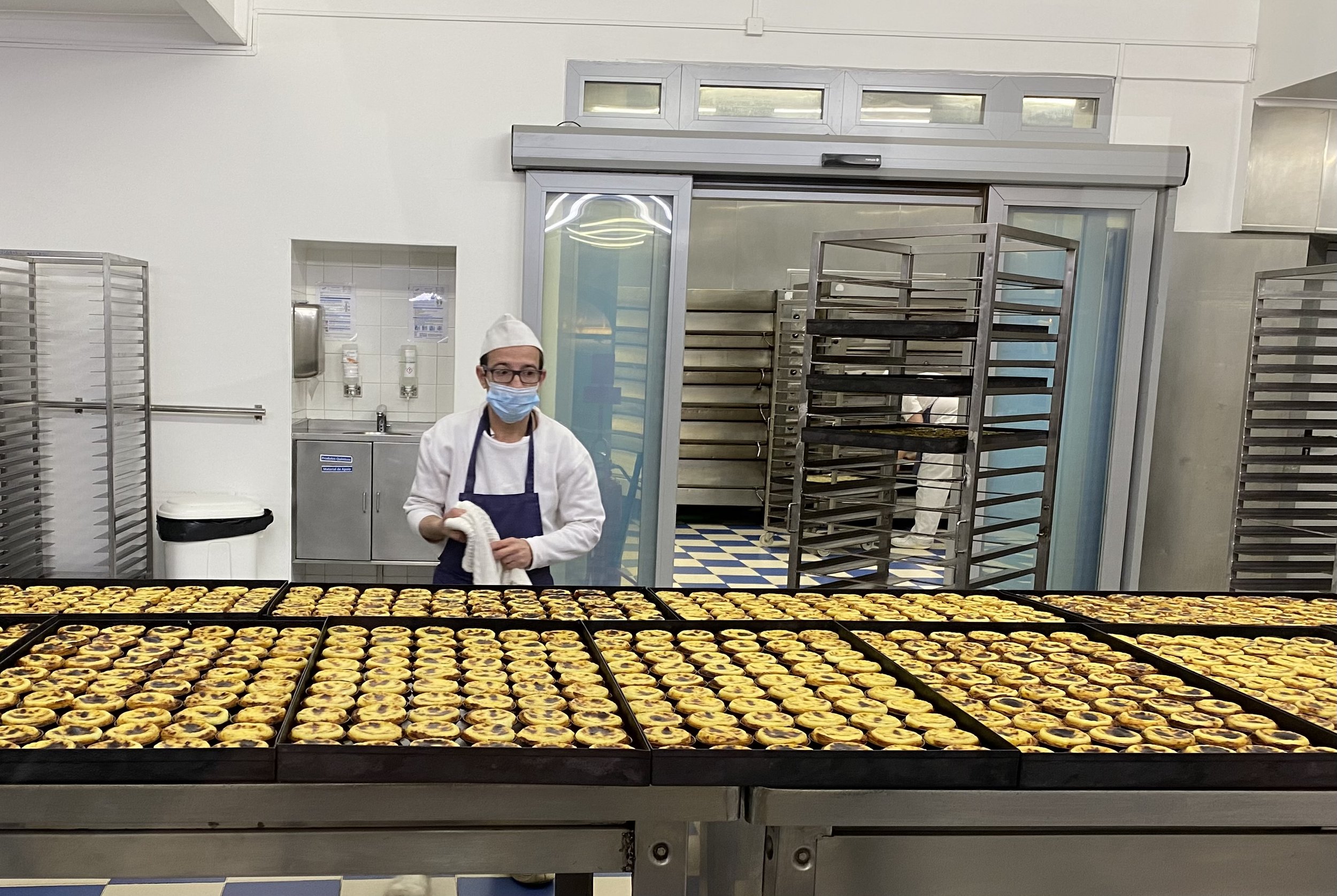
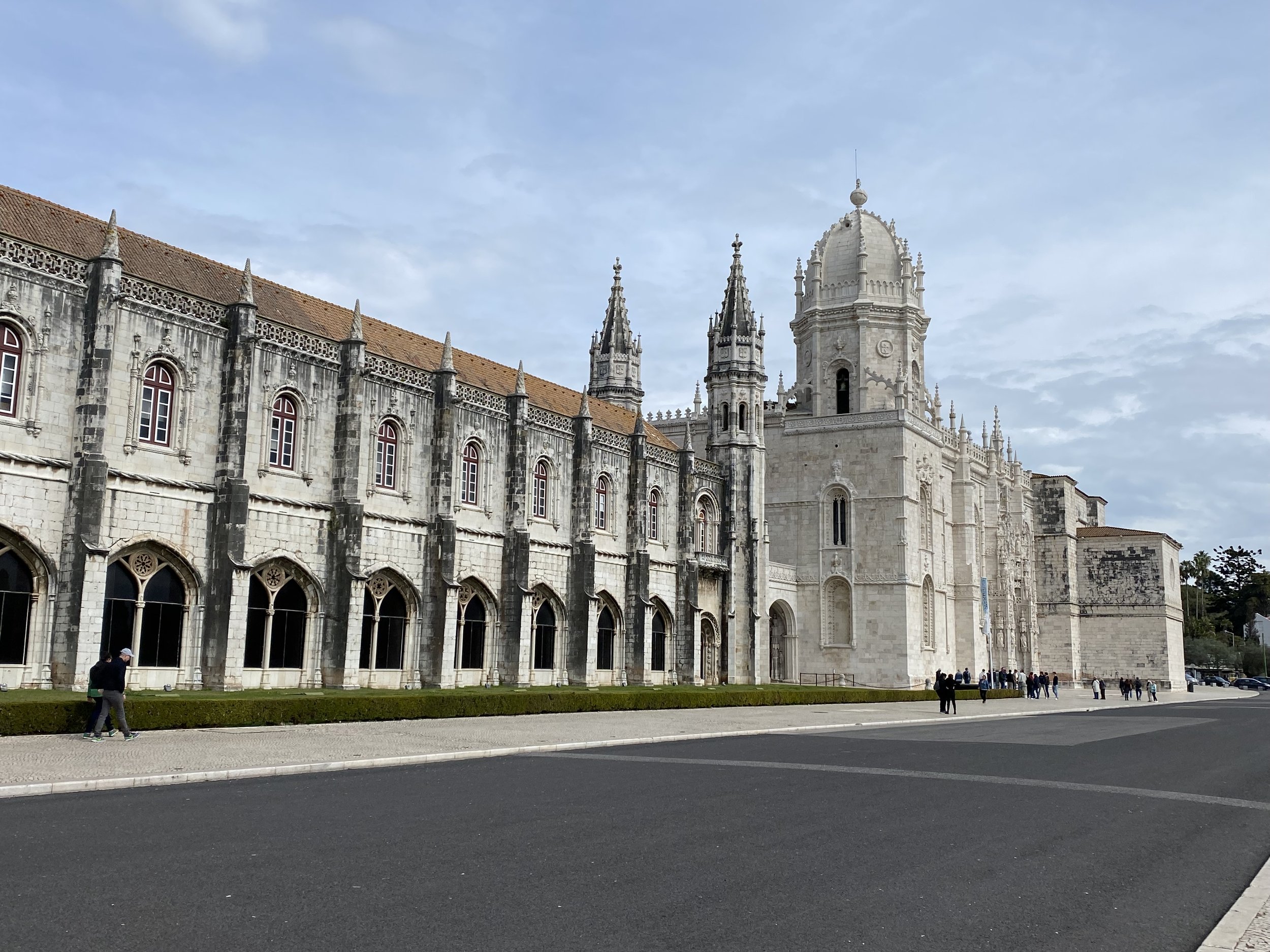
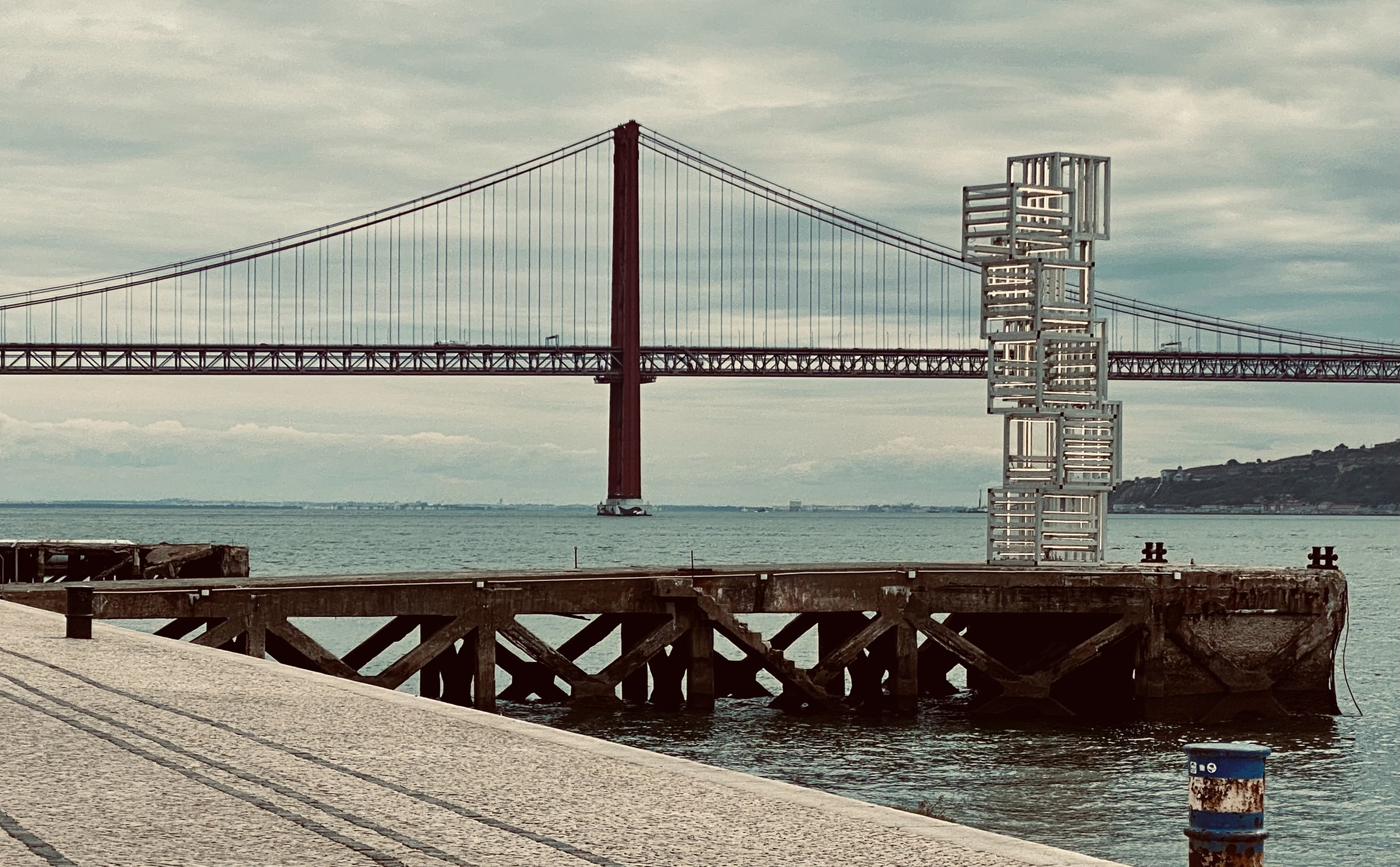
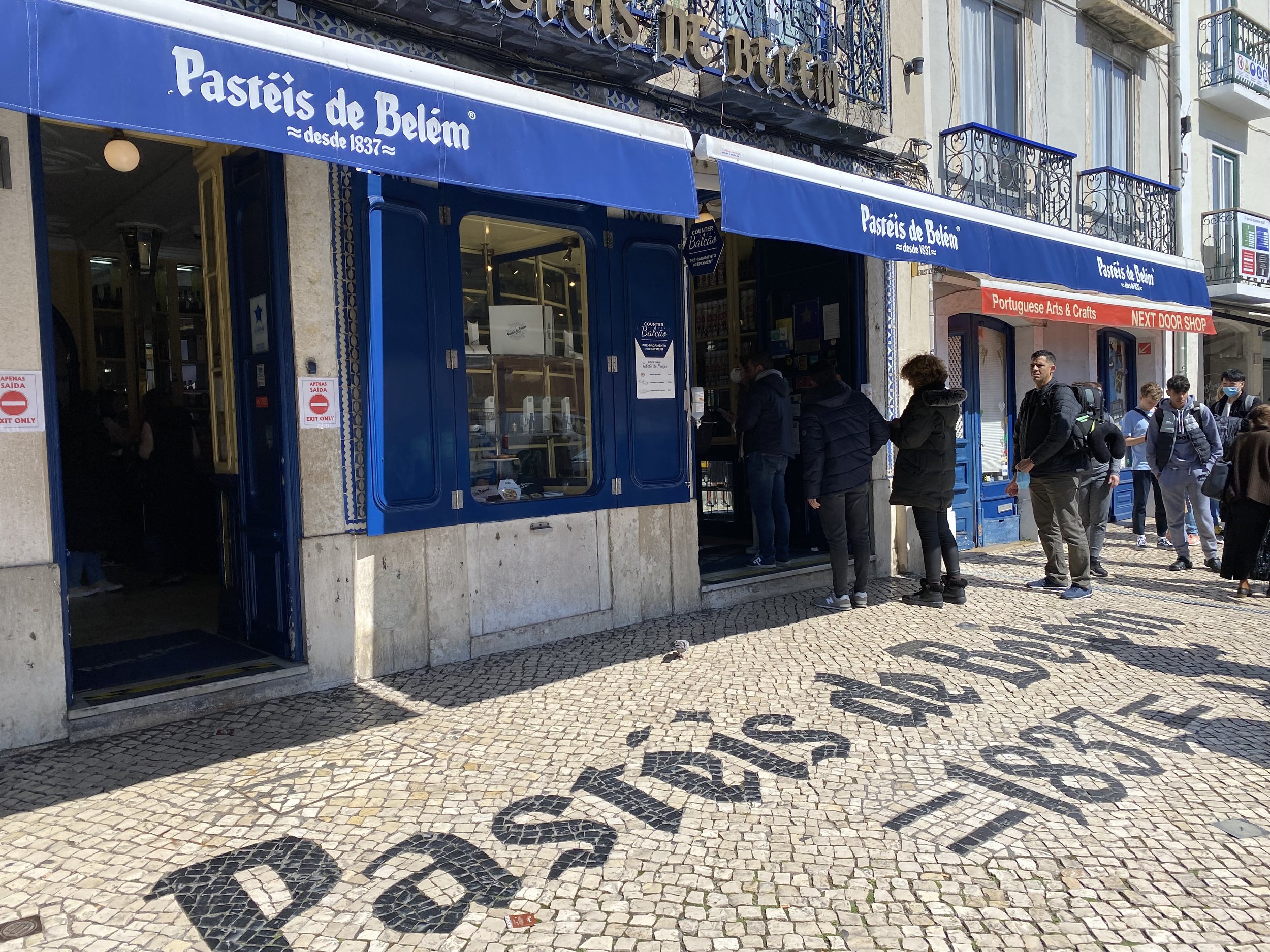
You can hop on the tram to get back to the Praca de Comercio and the Baixa/Chiado area.
EAT: As bifanas do Afonso (Bifanas/traditional pork sandwiches): Popular little takeout window for pork sandwiches to-go, located near the Praca de Comercia. Super cheap - sandwich and beer for something like 3 euros. For vegetarians/non-pork eaters, there are tons of spots nearby (I’d recommend avoiding the most touristy places on rua Augusta).
DRINK: A Ginjinha: tiny spot with outdoor standing-room only tables to get Lisbon’s famous cherry liqueur, ginjinha (served a shot glass, but you’re supposed to sip it). You’ll see ginjinha everywhere but this spot has been run by the same family since the mid-1800s and it’s super authentic and well-located near the Rossio. It’s also open from the early morning to 9 or 10pm so grabbing a ginjinha and chatting with some of the locals was another daily ritual (before or after the pasteis de nata).
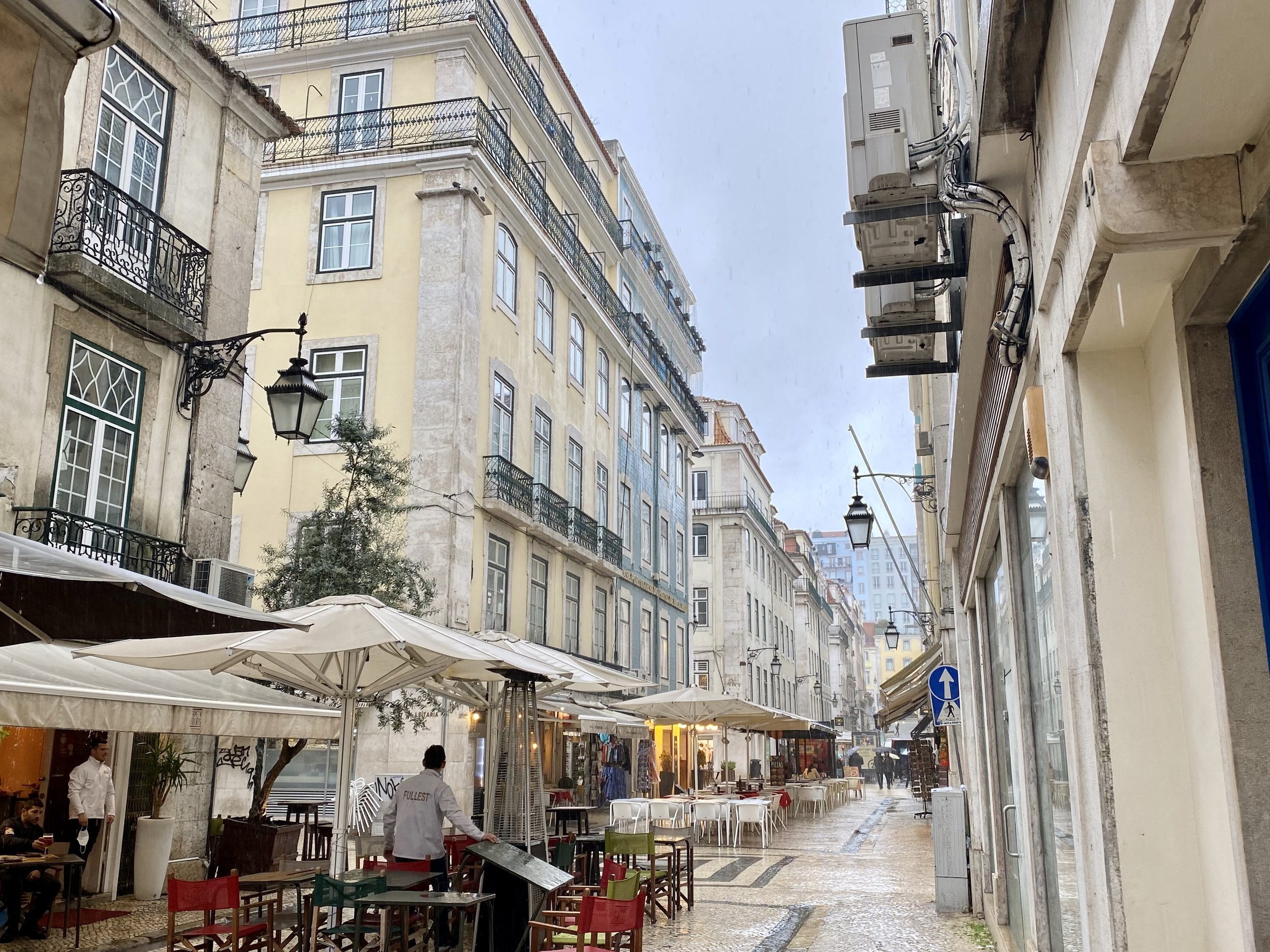
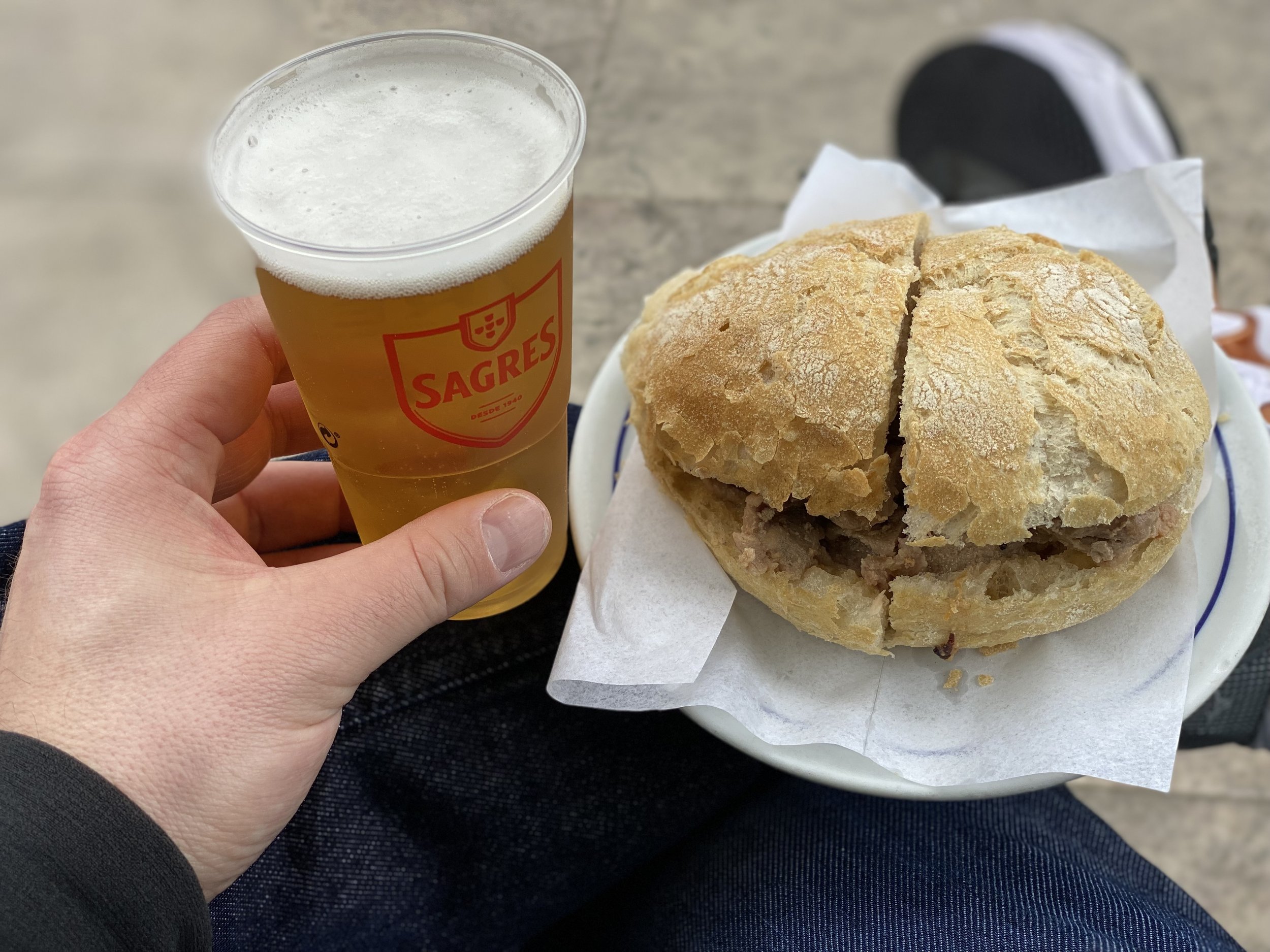

EAT: A Provinciana: Another option nearby with a great location near the Rossio Plaza if you’re looking for more of a sit-down meal. This is an authentic place for a traditional Portuguese lunch (which means lots of fresh fish and seafood but there are other options).
DO: Alfama Neighbourhood: The best thing to do here is simply wander the streets. Alfama is the oldest part of the city and wasn’t affected by the 1755 earthquake. You’ll find narrow streets, with little gems to discover around every corner. You can also do a guided tour but you’ll get a good sense of the area just by walking around. The São Jorge Castle is nearby. I didn’t have the time to go inside, but it’s a popular spot with great city views.
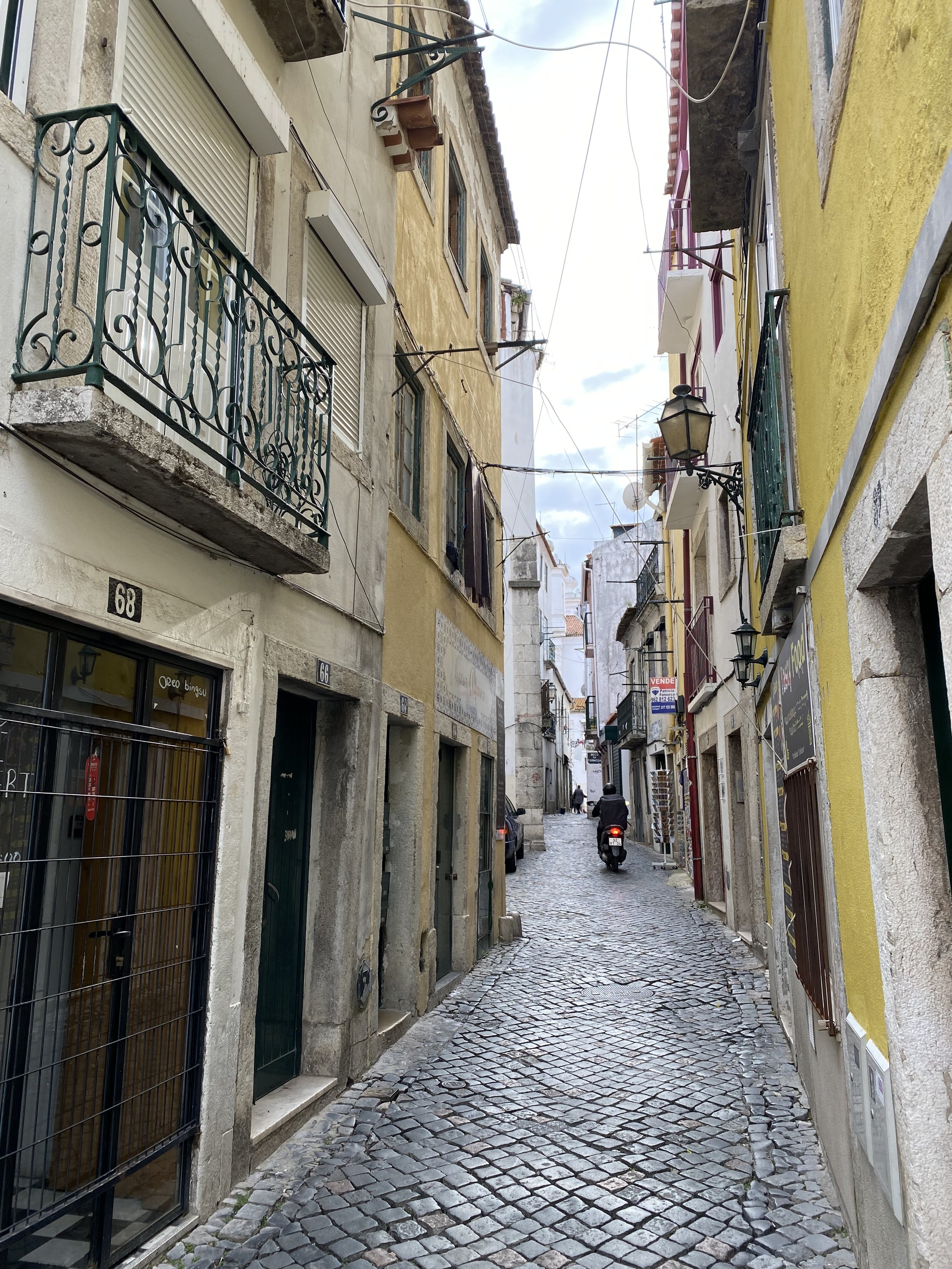
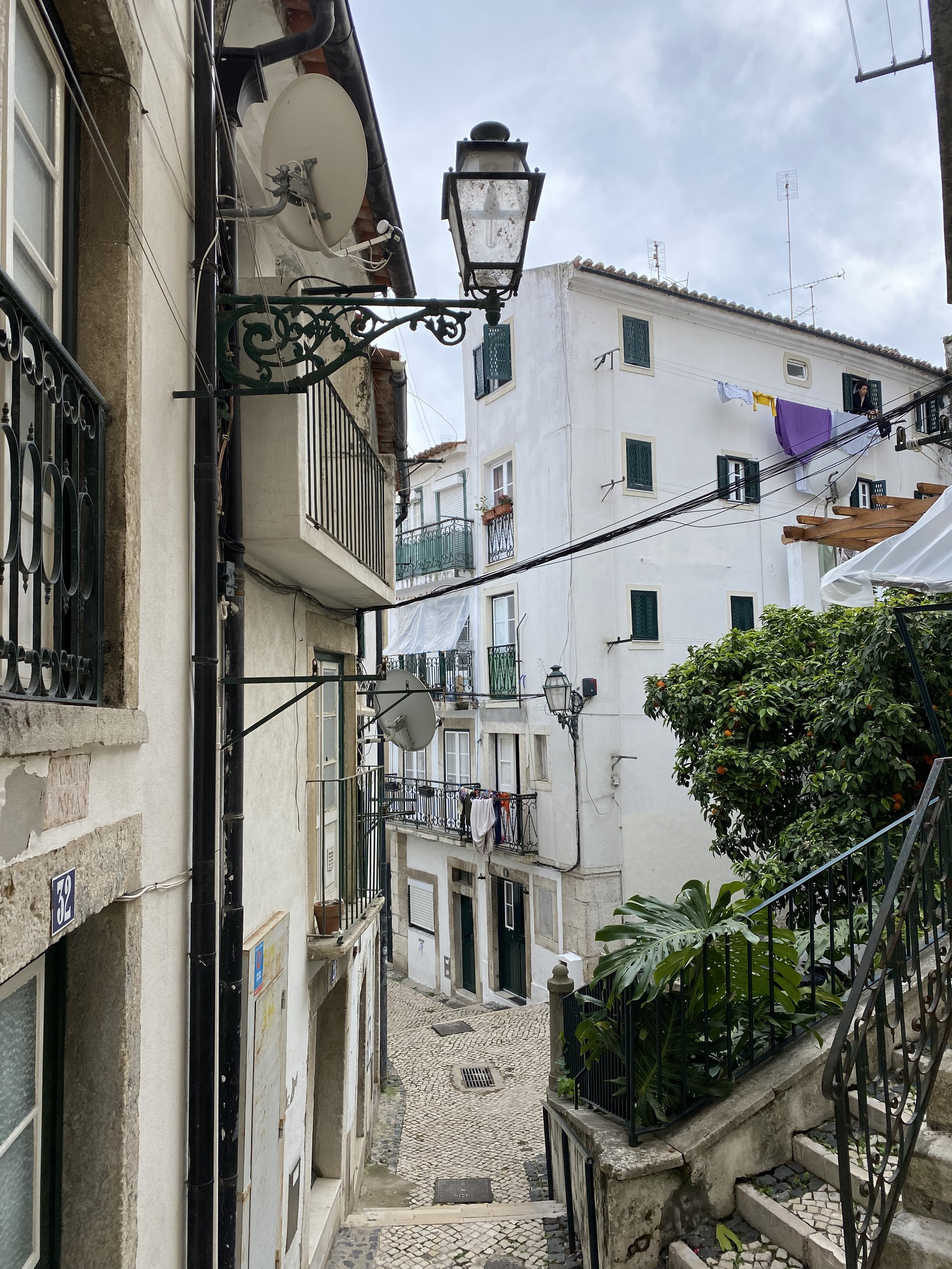
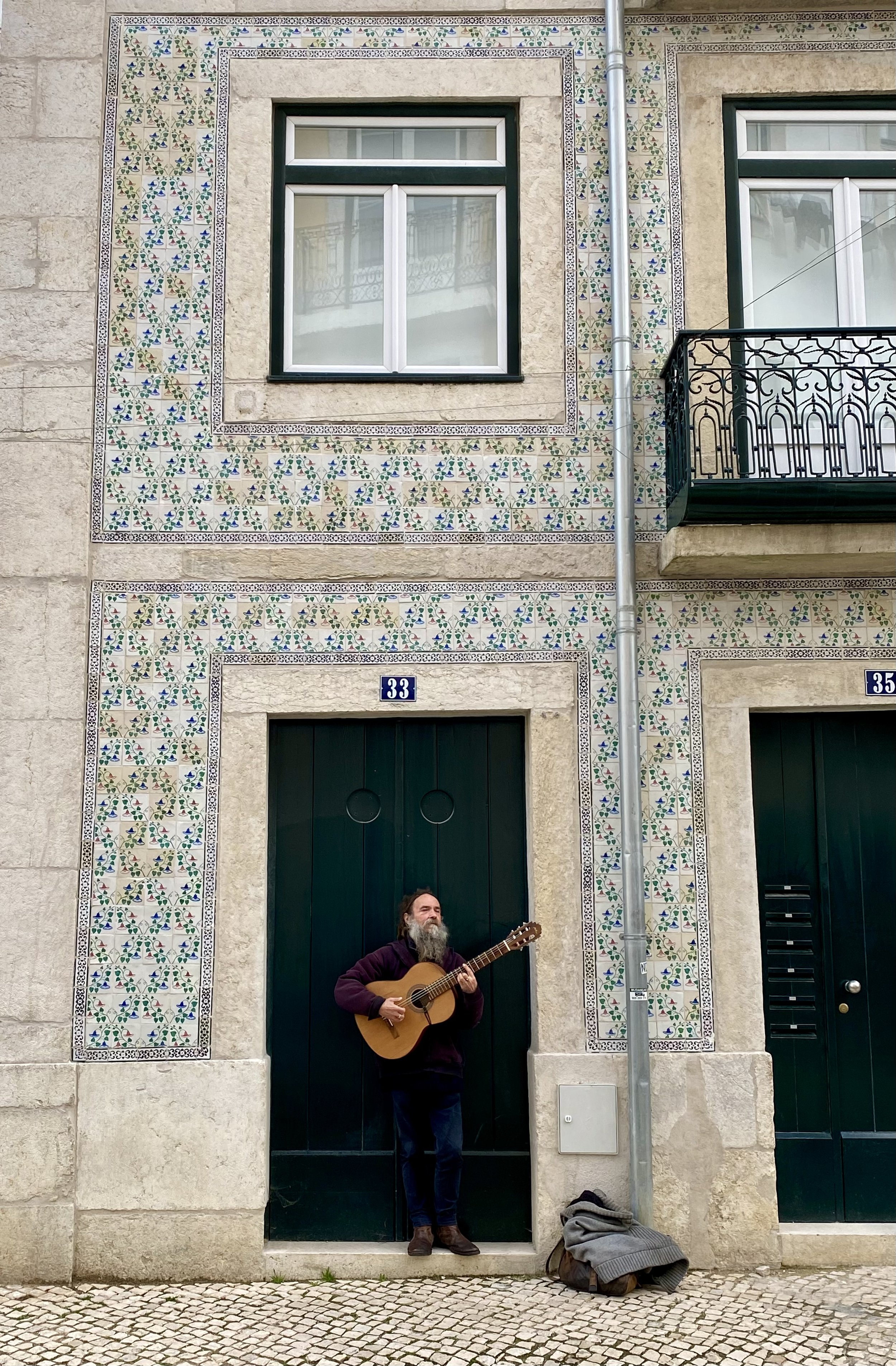
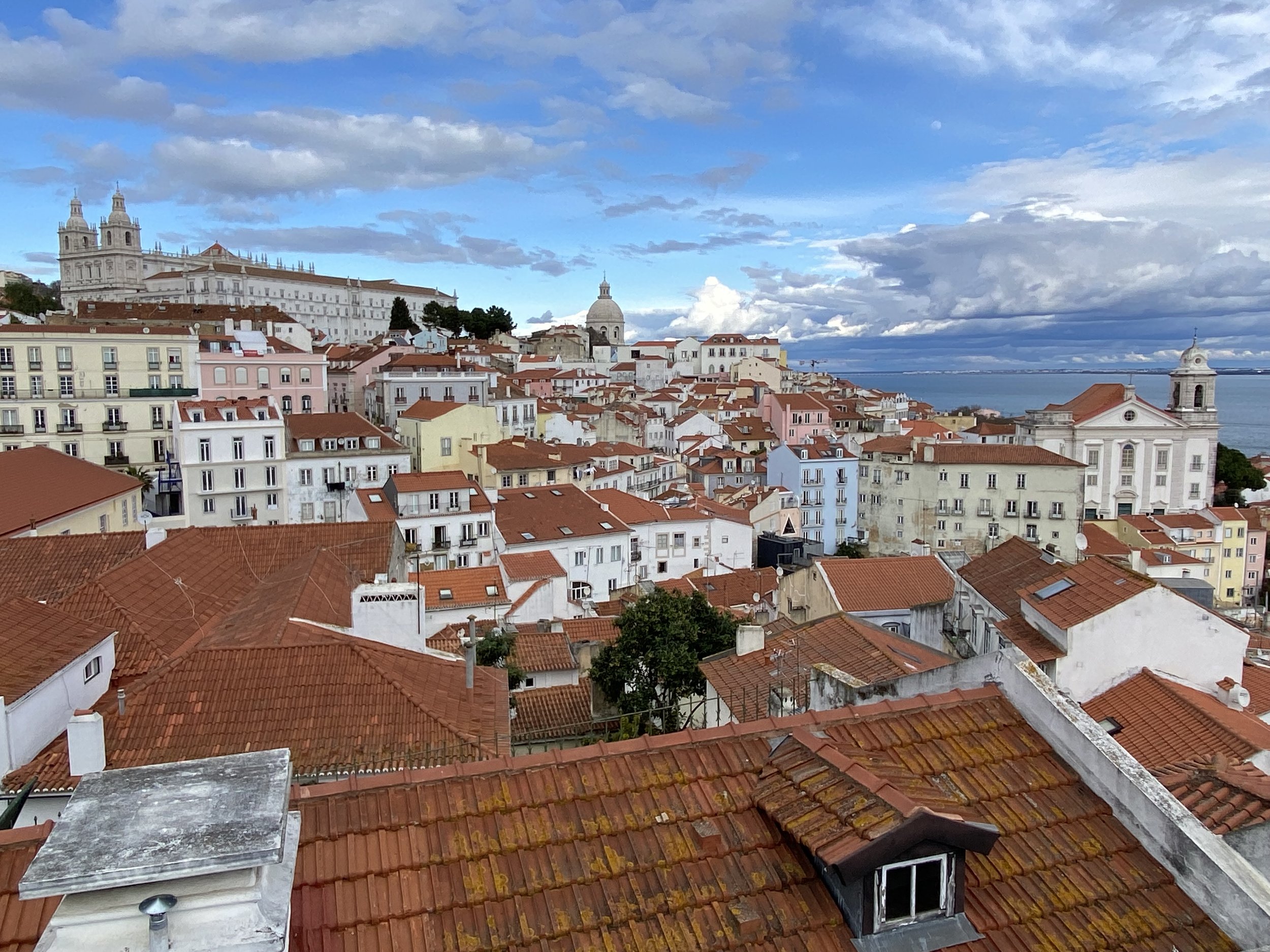
DO: For tonight’s sunset, take the ferry from the Cais do Sodre (by the TimeOut Market) across the river to Almada - make sure you take the one that goes to Cacilhas (you can use or buy a regular Lisbon metro card on the ferry). Walk along the riverside to the bridge - you’ll have the city of Lisbon in all its glory to your right and the sun setting by the bridge right in front of you. About 1km from the ferry terminal, there’s a restaurant called Ponto Final with yellow chairs on a little pier overlooking the bridge. It’s open for lunch and then again for dinner starting at 7pm. I didn’t eat here as sunset was earlier when I was in town and I wanted to get back across the river, but you can’t beat the setting.
DRINK/MUSIC:: Fado at Tasca do Chico: I definitely recommend experiencing fado (traditional Portuguese music that’s been described as the Portuguese blues) while you’re in Lisbon. This is a good bar to hear traditional fado music, located right in the Barrio Alto. No dinner package required (generally avoid these places). Just get a drink - perhaps a vinho verde (green wine) - it’s not green, it just means it comes from the historic minho province of Portugal. This is a small place so get there early if you can - great experience.
Day 3 - Sintra
DO: I did this on an organized tour but you can also take the train. Sintra is a town full of castles and palaces in the forest just 30km outside of Lisbon and is the most popular day trip from the city. The highlights are the: Palacio Nacional da Pena (the famous colourful palace), the Quinta da Regaleria, and the Moorish Castle. On our tour we just saw Pena from outside and went into the Quinta da Regaleria - it’s a small palace and unique park to walk around with lagoons, caves, tunnels - it’s an interesting place; you’ll probably be here about 1.5 hours. The most popular thing to see is the ‘initiation well,’ a sort of tunnel with a spiral staircase that you walk down. You could easily spend the whole day (or even an overnight) visiting the sights in Sintra.

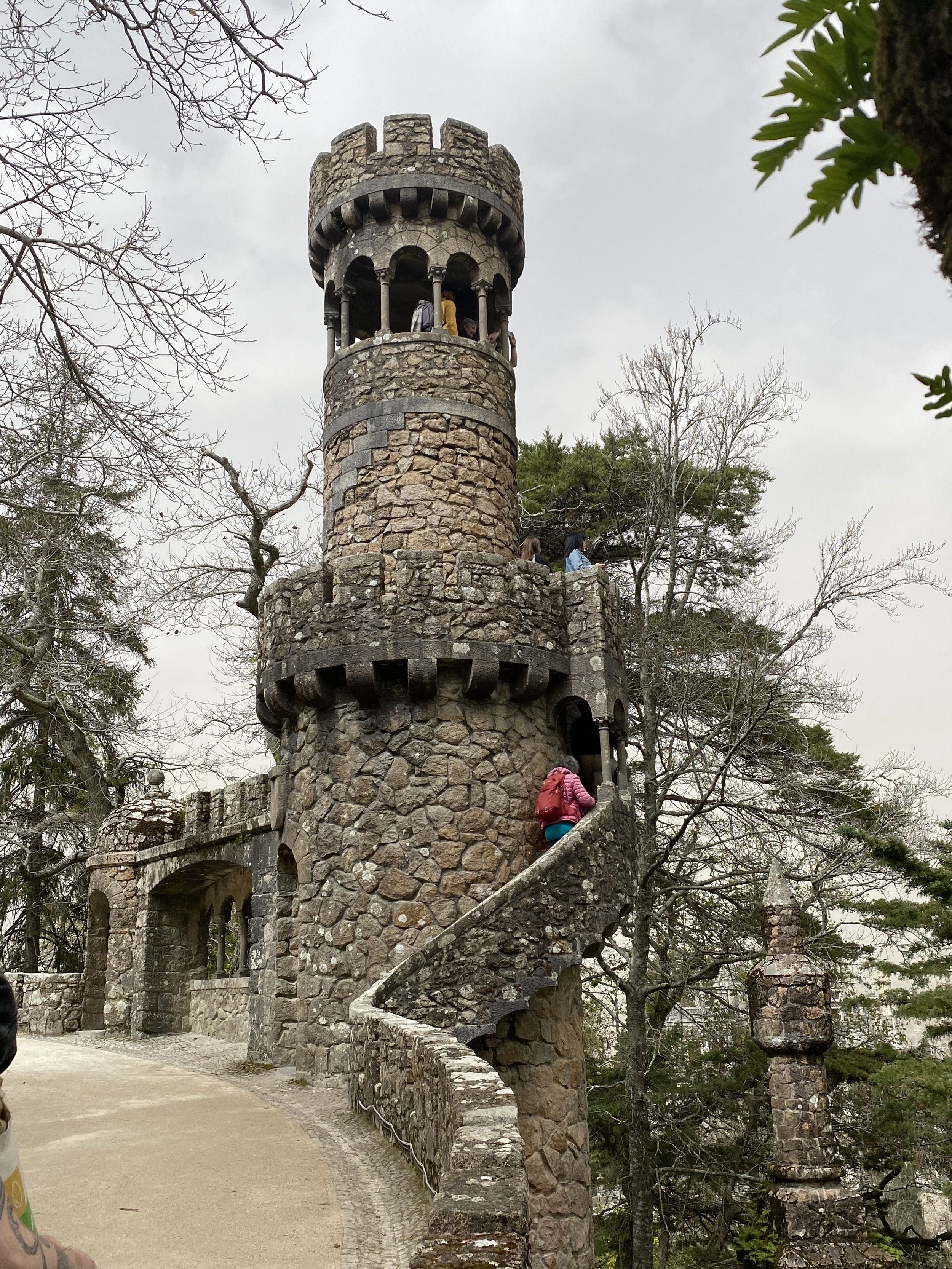
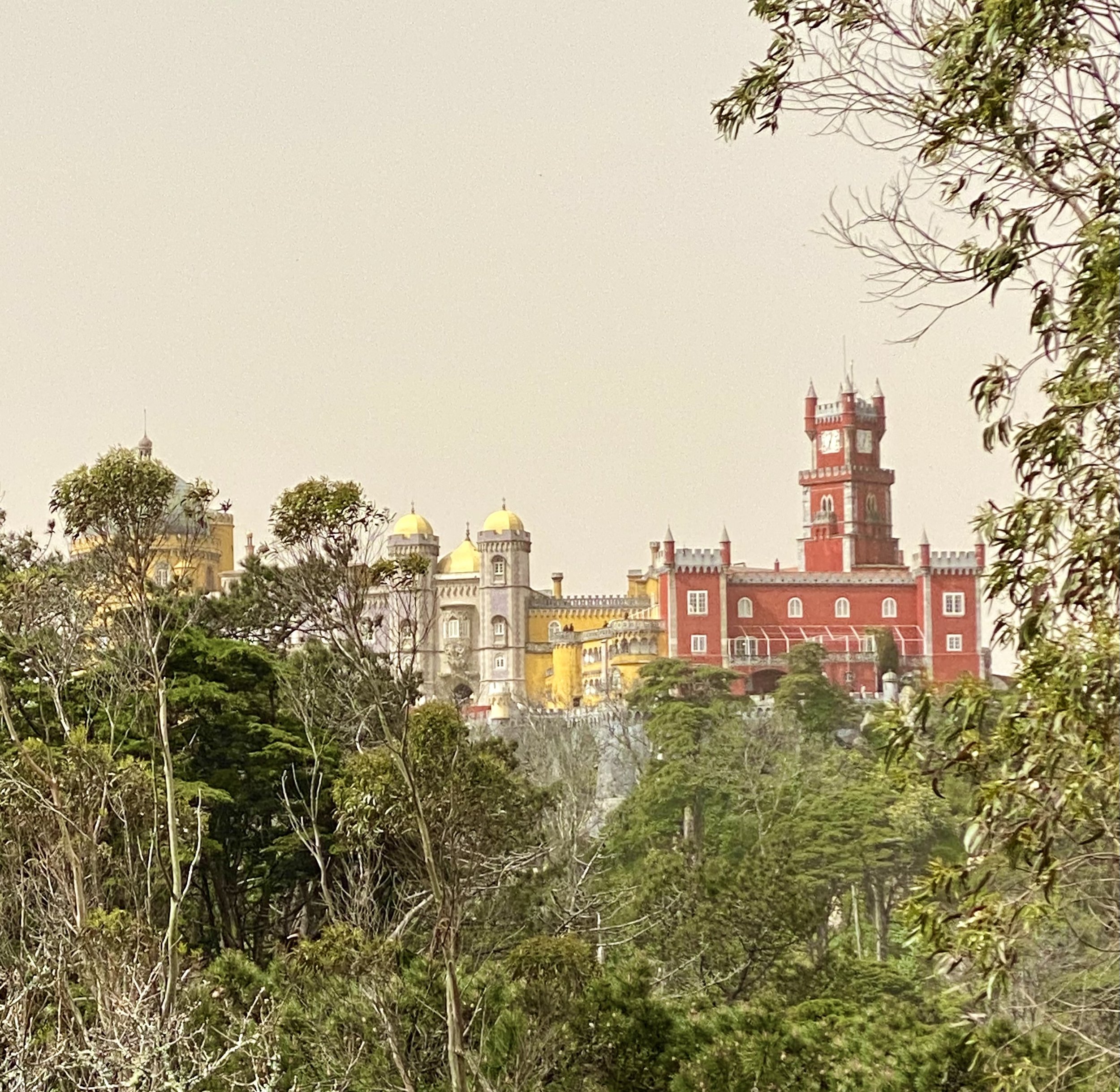
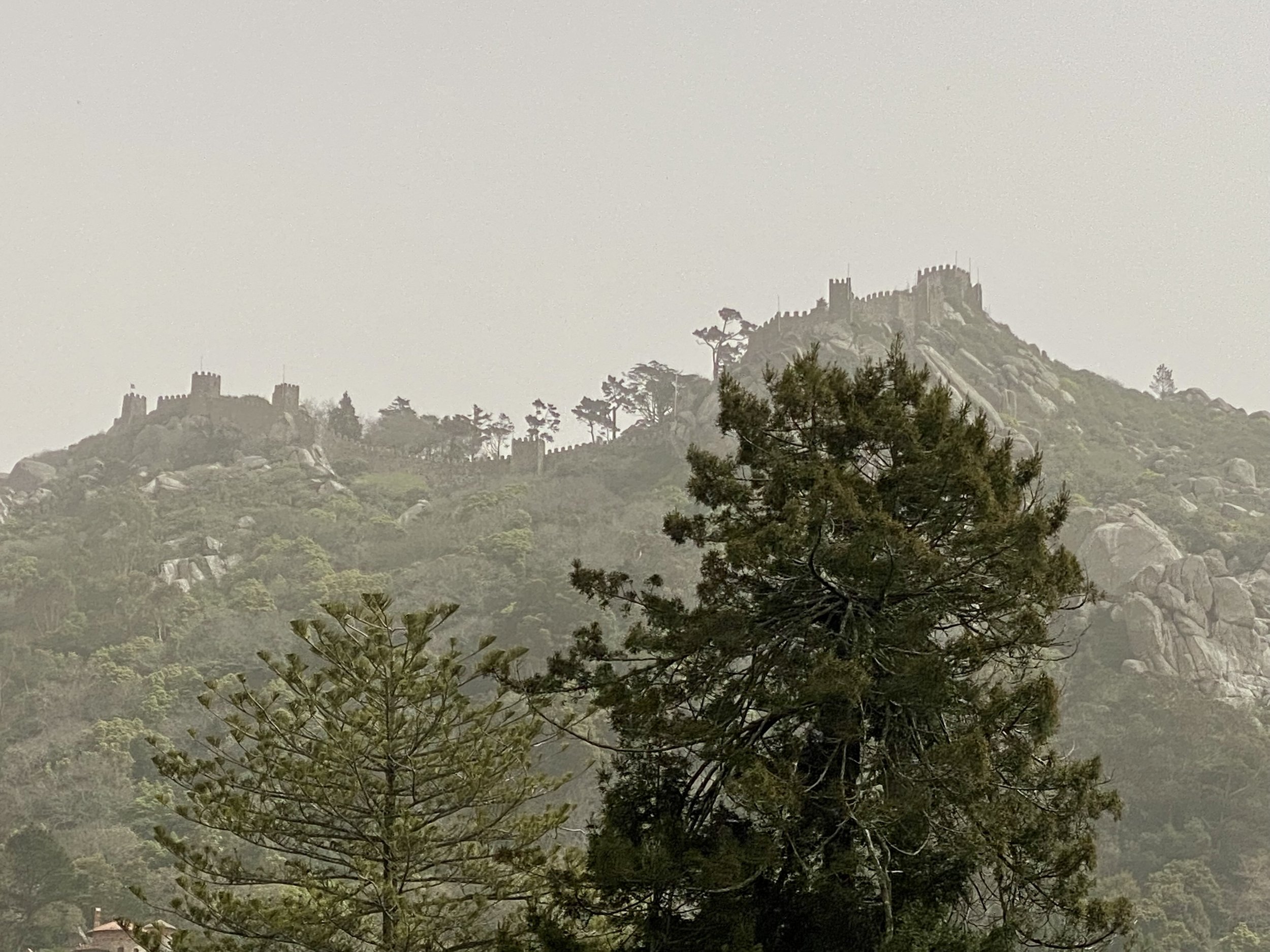
DO: If you have a car, just before leaving Lisbon you can check out the Miradouro Panorâmico de Monsanto, which is a graffiti-covered abandoned restaurant from the 1960s with a great view of the city. There are talks of them developing this spot, so get here while it’s authentic.
DO: On the way back you can drive along the coast to check out Cabo da Roca, the most westerly point in mainland Europe.
EAT: We had lunch on our tour in a little restaurant called Cafe Ocidente, a very local little restaurant in the tiny town of Azoia near the westernmost point.

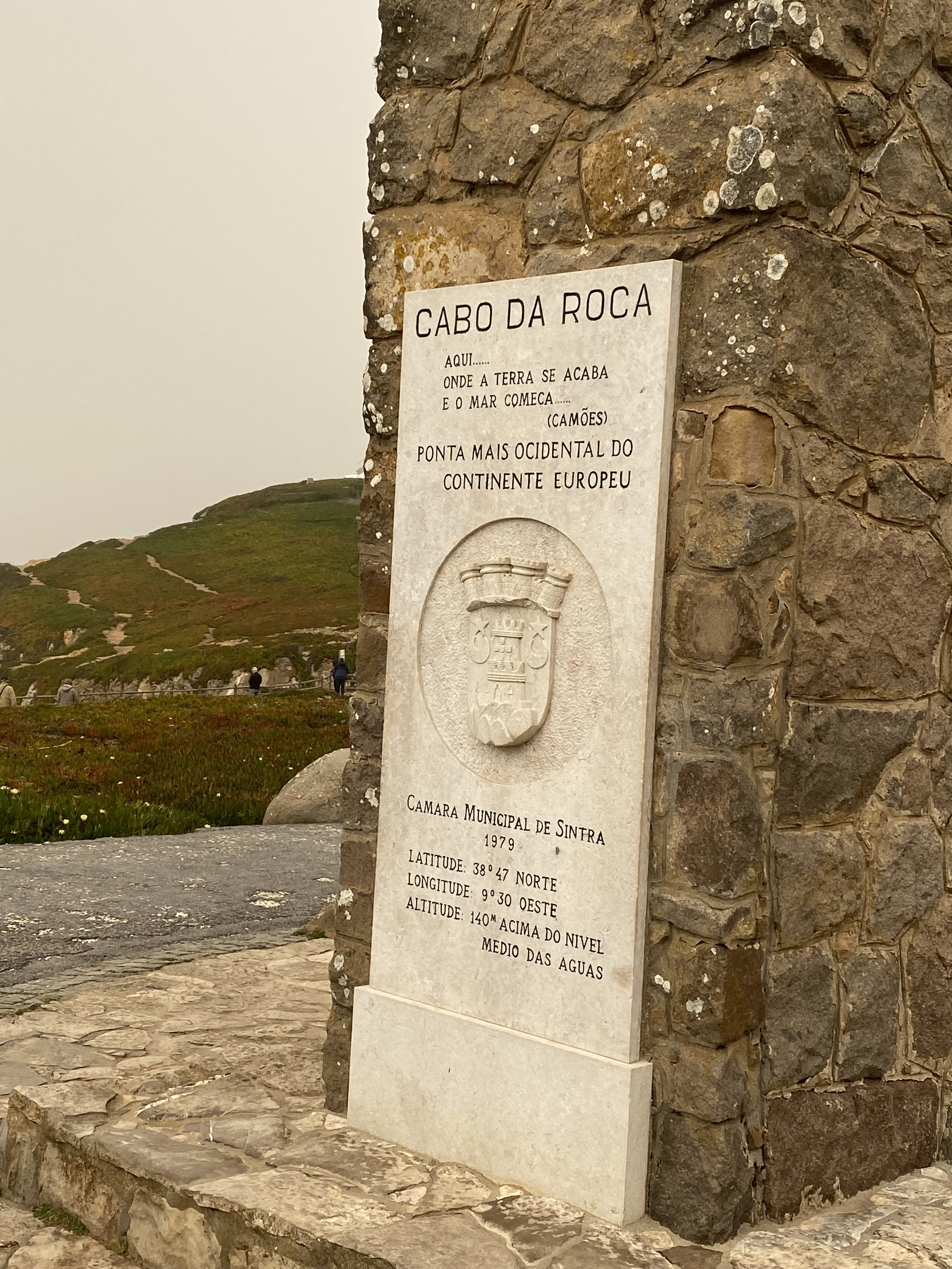
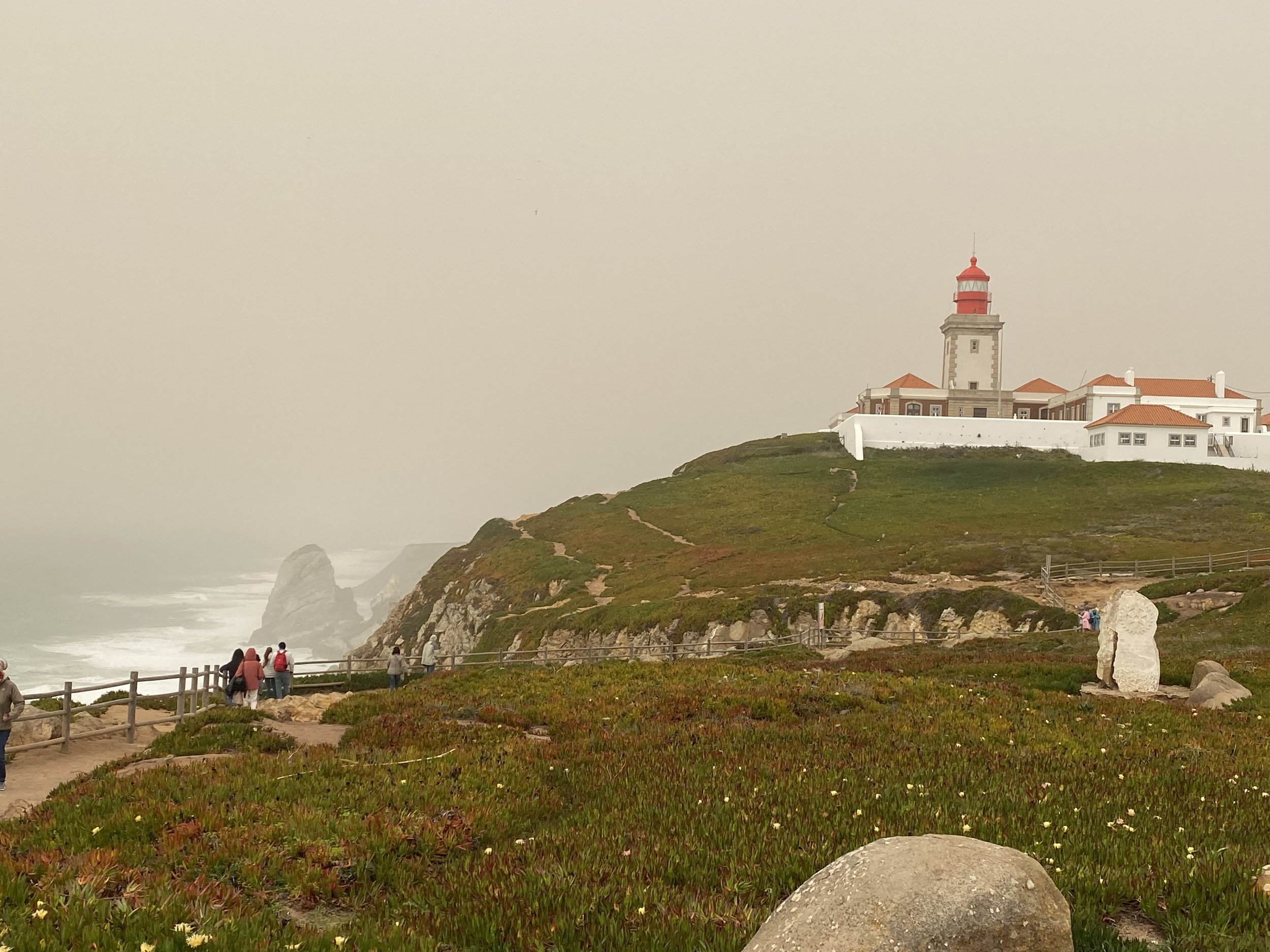
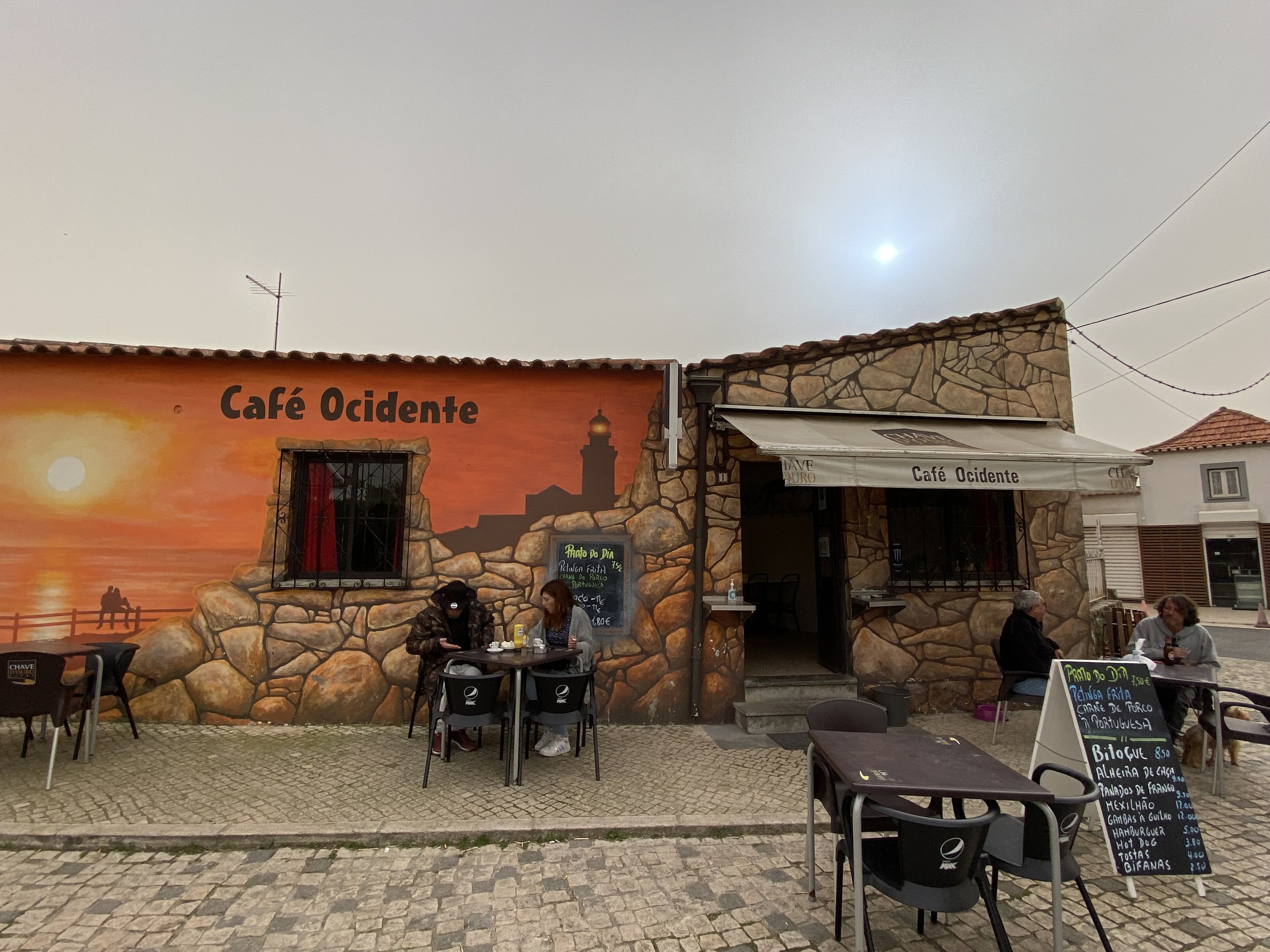
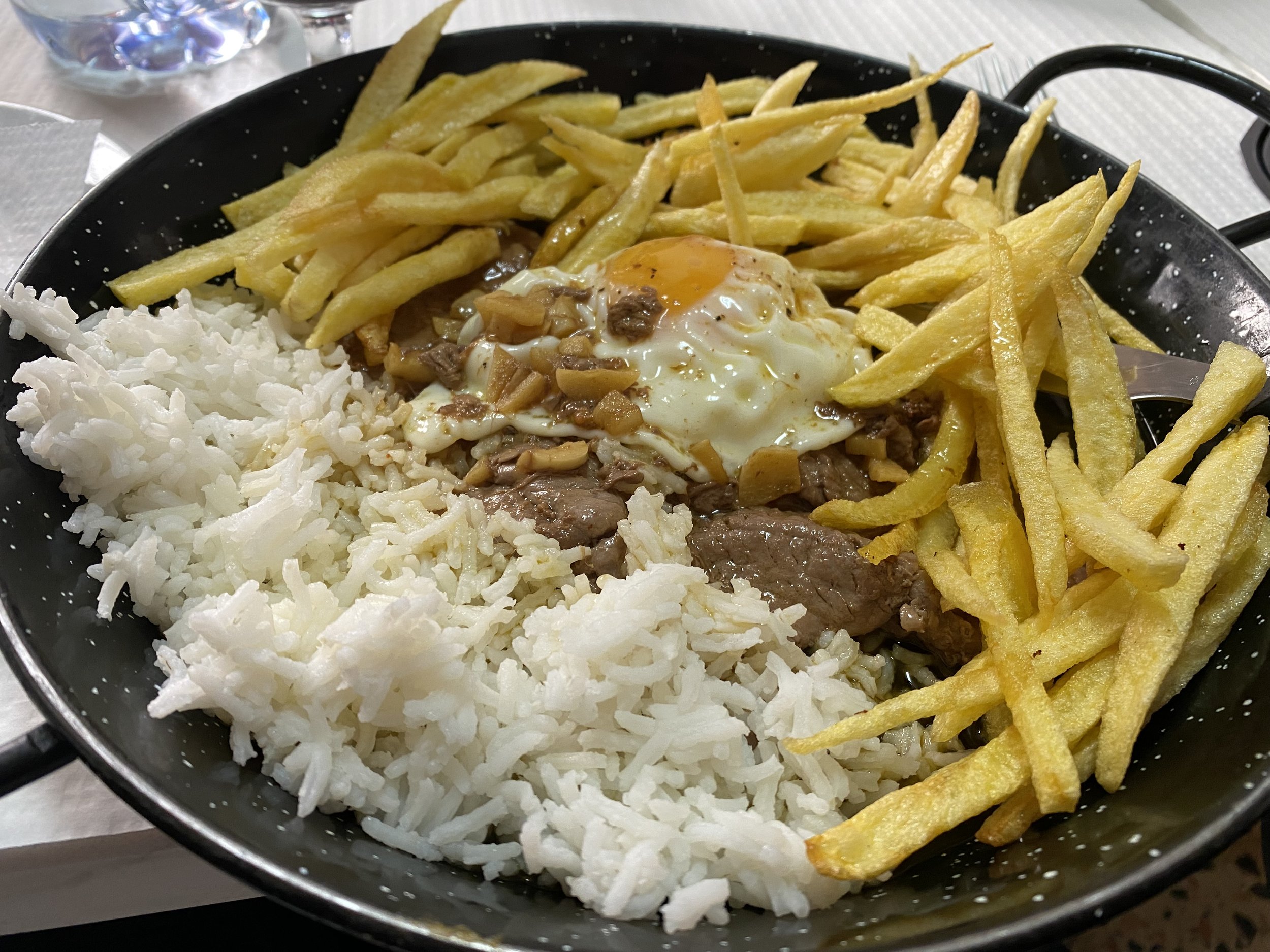
EAT: Bonjardim: Back in the city, this is a great place for peri-peri chicken, in a great location on a centrally-located atmospheric side street.
DRINK/MUSIC: After dinner, check out Barto (near the cathedral) a bar with late-night live music, or go back to Barrio Alto for more fado.
Day 4 - Cascais
(Or, alternatively take the day to explore more of Lisbon you missed)
DO: If it’s a nice day, Lisbon has easy access to the beach which is particularly nice after days climbing lots of hills (you’ll know what I mean by day 4). Take the train out to Cascais (about 30 minutes from Lisbon) which is a pretty, little seaside town. The path along the ocean is a great place to run or rent a bike - either 3km west to Estroil or about 9km north to Guincho. You’ll see rocky cliffs, mansions, beaches and likely some surfers out in the water. It wasn’t beach weather when I was there but on weekends in the summer, I hear it gets pretty crowded, so be prepared.
EAT: Santini: Good spot for gelato in the centre of town
It’s an easy 30 minute train ride back to the city.
(There was a sandstorm from the Sahara the day I was in Cascais so that’s why the photos look a little orange - I’m sure it would have been even nicer with blue skies!)
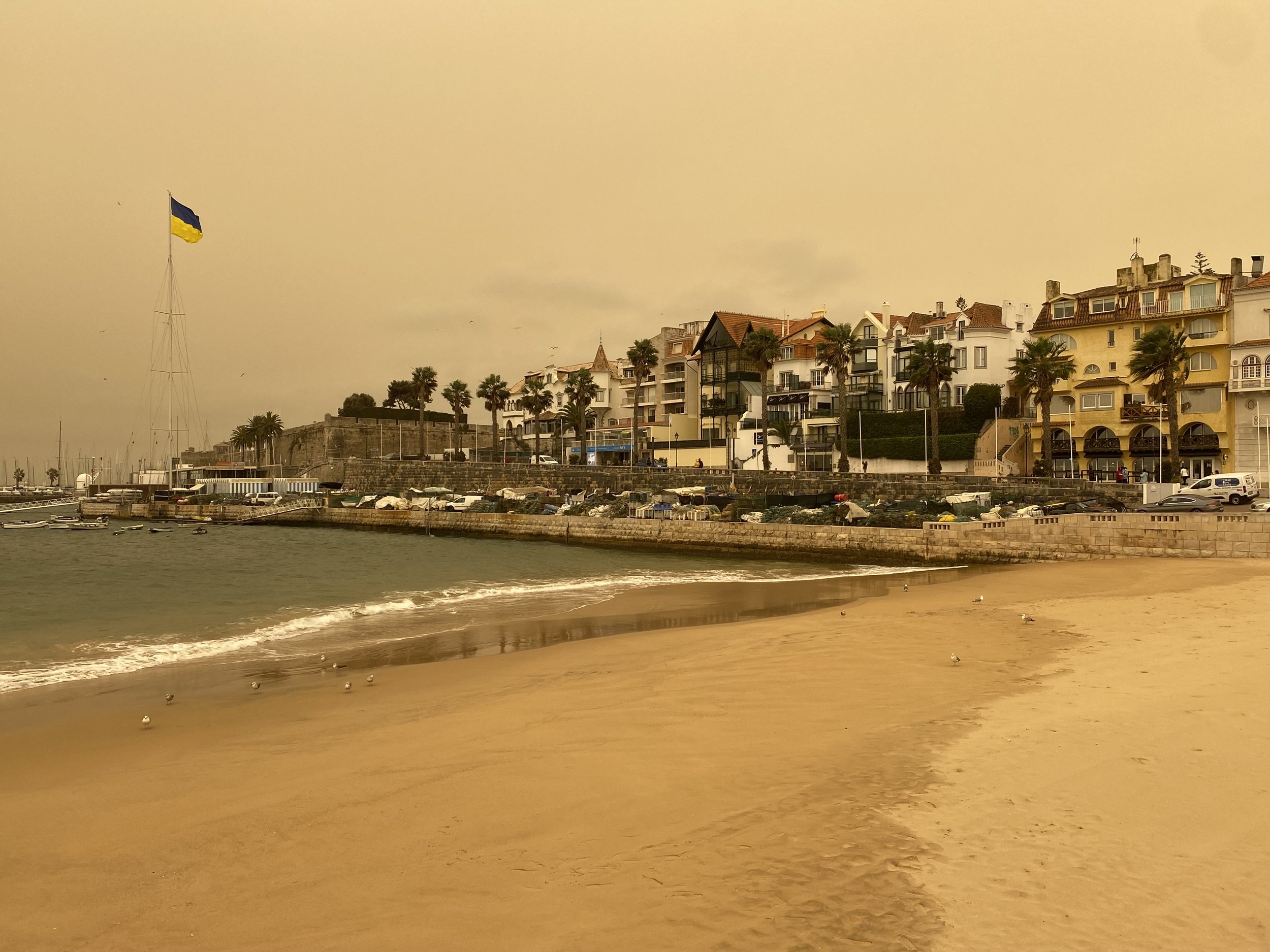
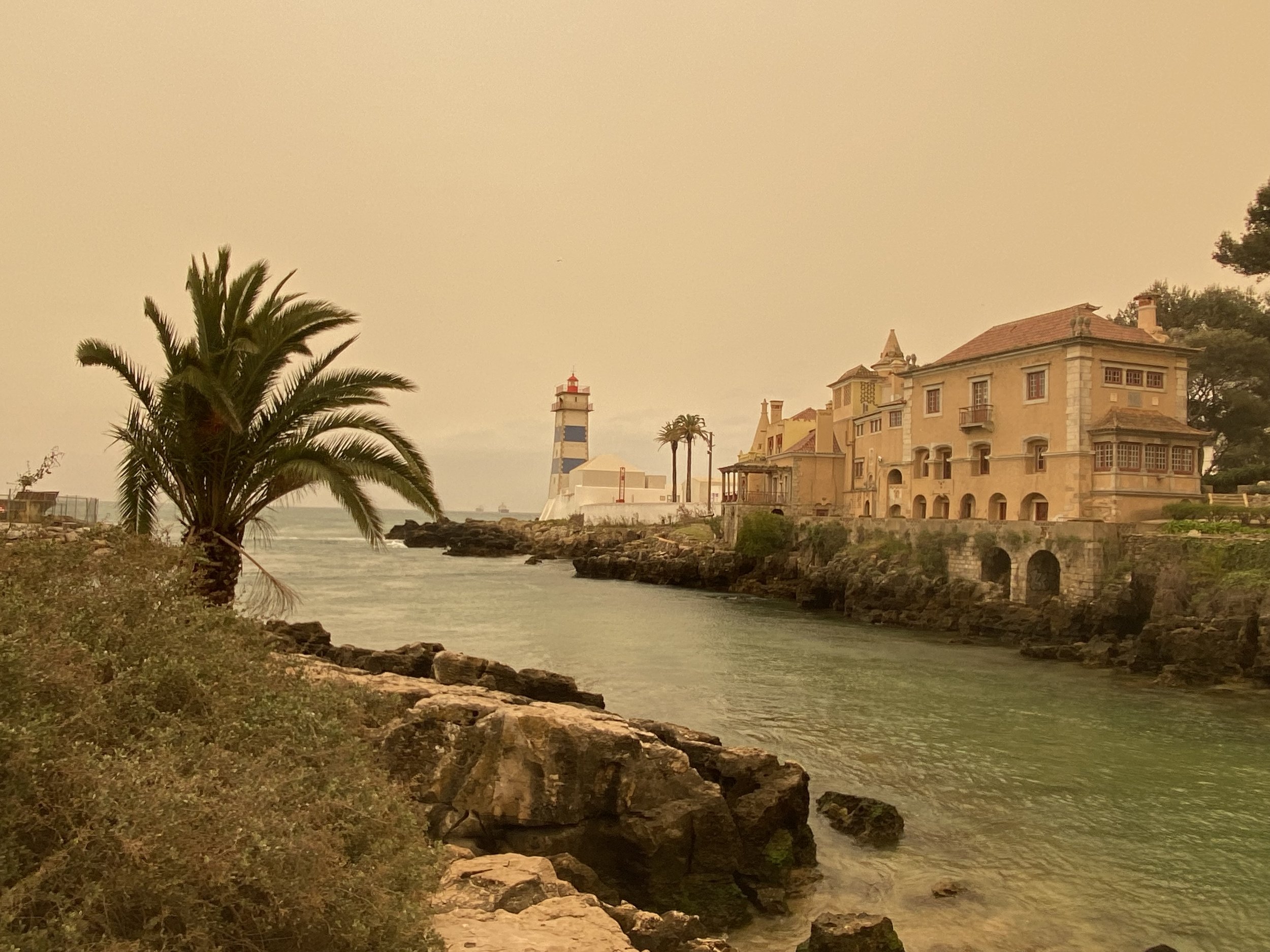

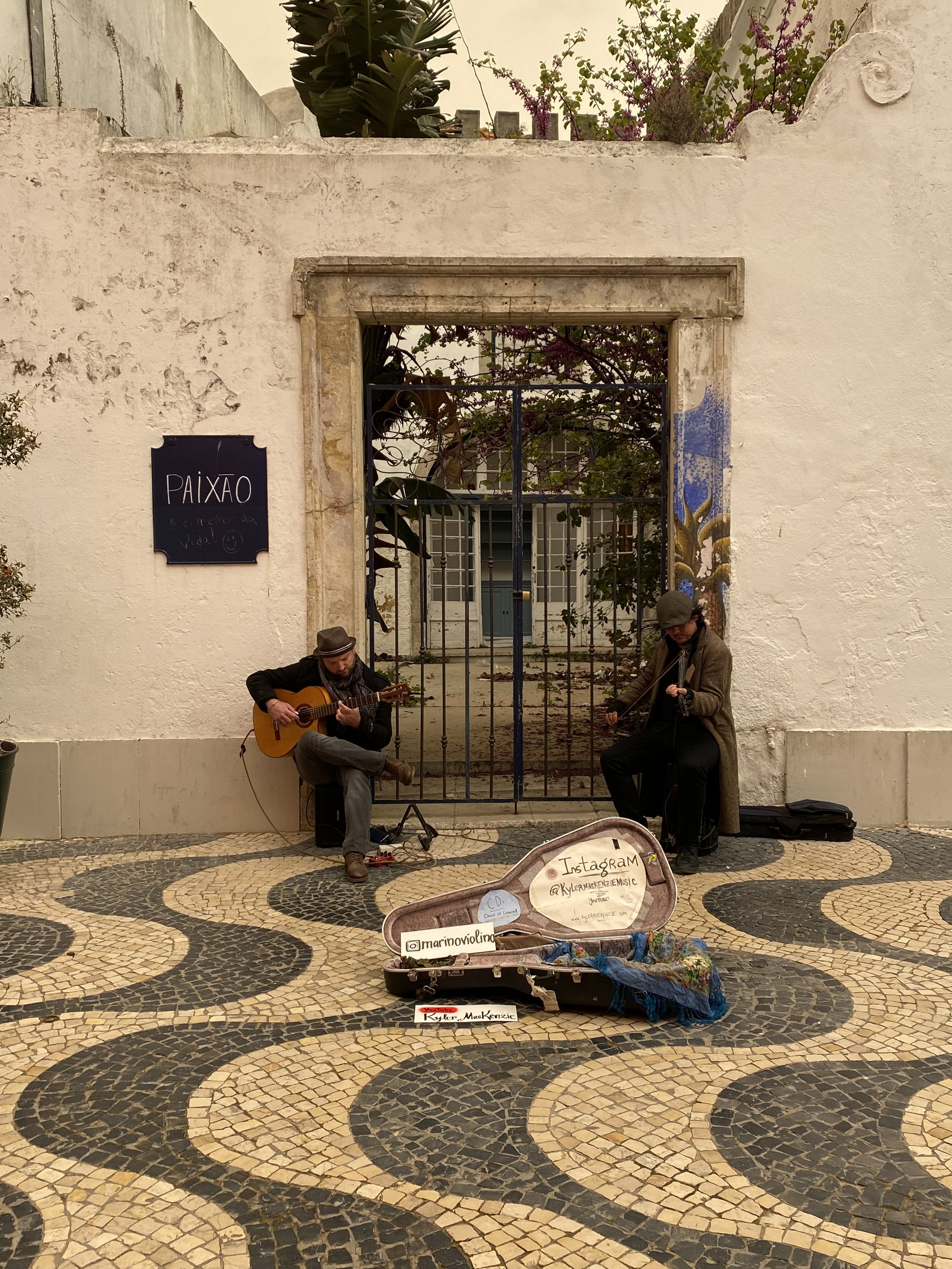
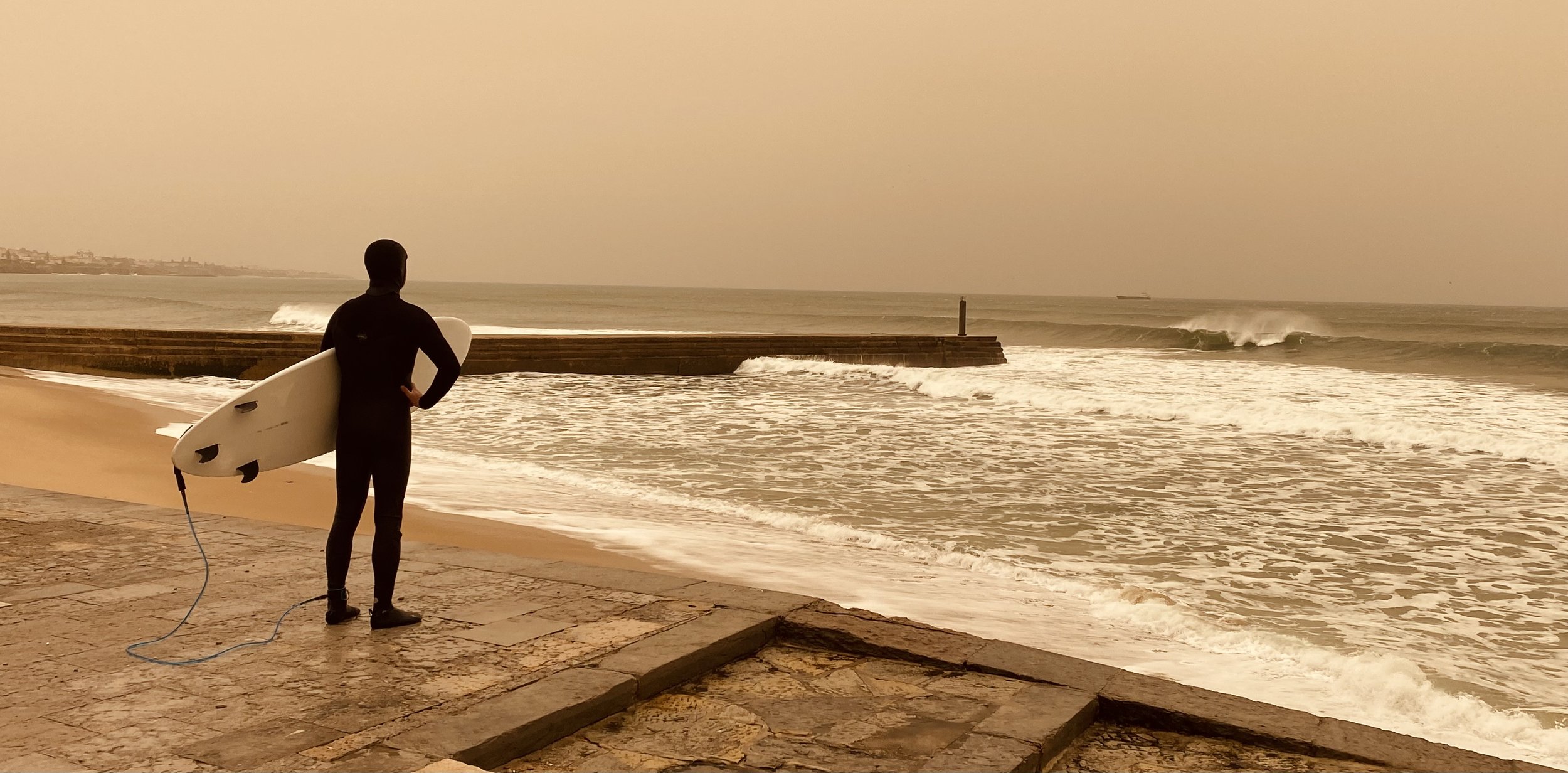

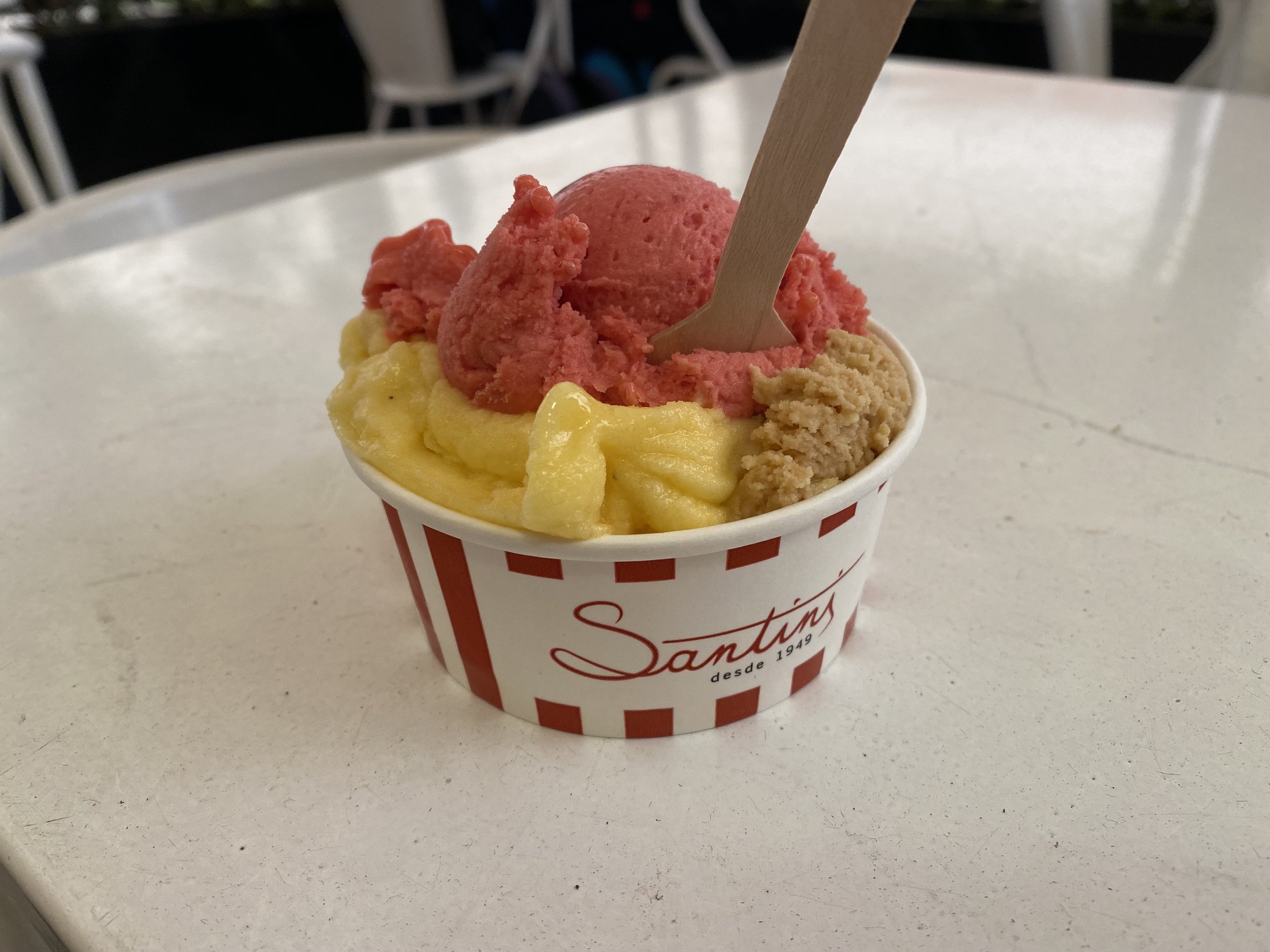
DO:. If you’re not into going to the beach, there’s still lots to do in the city. You can take another trip on Tram 28 to see other parts of the city, hang out at your favourite viewpoint (or discover a new one), or relax in a city park (Eduardo VII at the end of the Av. da Liberdade is a popular spot), shop for some canned sardines - another Lisbon classic, visit the castle or a museum - just to name a few ideas.
Get Around
You’ll likely spend a lot of time walking - many of the main sights are accessible on foot if you don’t mind a few hills (ok, a lot of hills). The funiculars and trams (historic in the city centre, more modern elsewhere) can help you get around too. You’ll see tuk tuks as well - they are expensive and not authentic Lisbon transportation but they’ll get you where you want to go if your legs are tired (Uber’s work too). The metro is easy to use but unless you’re going further out from the city centre, you may not need it. However, the metro cards are good on the tram and ferries so it may be worth it to put a few euros on a card. It’s also a cost-effective way to get from the airport into the city. Fun fact: the seats on the Lisbon metro are made from cork. Portugal exports 50% of the world’s cork!
OnTheMove Essentials - Lisbon
DO
Ride Tram 28 past Lisbon’s historical sights
Head to the Belem district, west of the city centre, to see the monastery and tower
Take in a view of the city from a miradouro (lookout); ideally the miradouro da Senhora do Monte for sunset
Do a day trip to Sintra; visit the Pena Palace and/or the Quinta da Regalaria
Go to a fado bar (one recommended spot is tasca do chico) in the Barrio Alto
If time permits, wander the narrow, atmospheric streets of Alfama, Lisbon’s oldest neighbourhood
EAT AND DRINK
Pasteis de nata at Manteigaria and/or Pasteis de Belem
Fresh fish and seafood (Restaurante Churrasqueira da Paz, A Provinciana); especially bacalhau (codfish) which is considered the national dish
Peri-peri chicken (Bonjardim)
Visit TimeOut Market to sample dishes from top Portuguese chefs
Sip ginjinha (traditional sour cherry liqueur) with the locals at A Ginjinha




